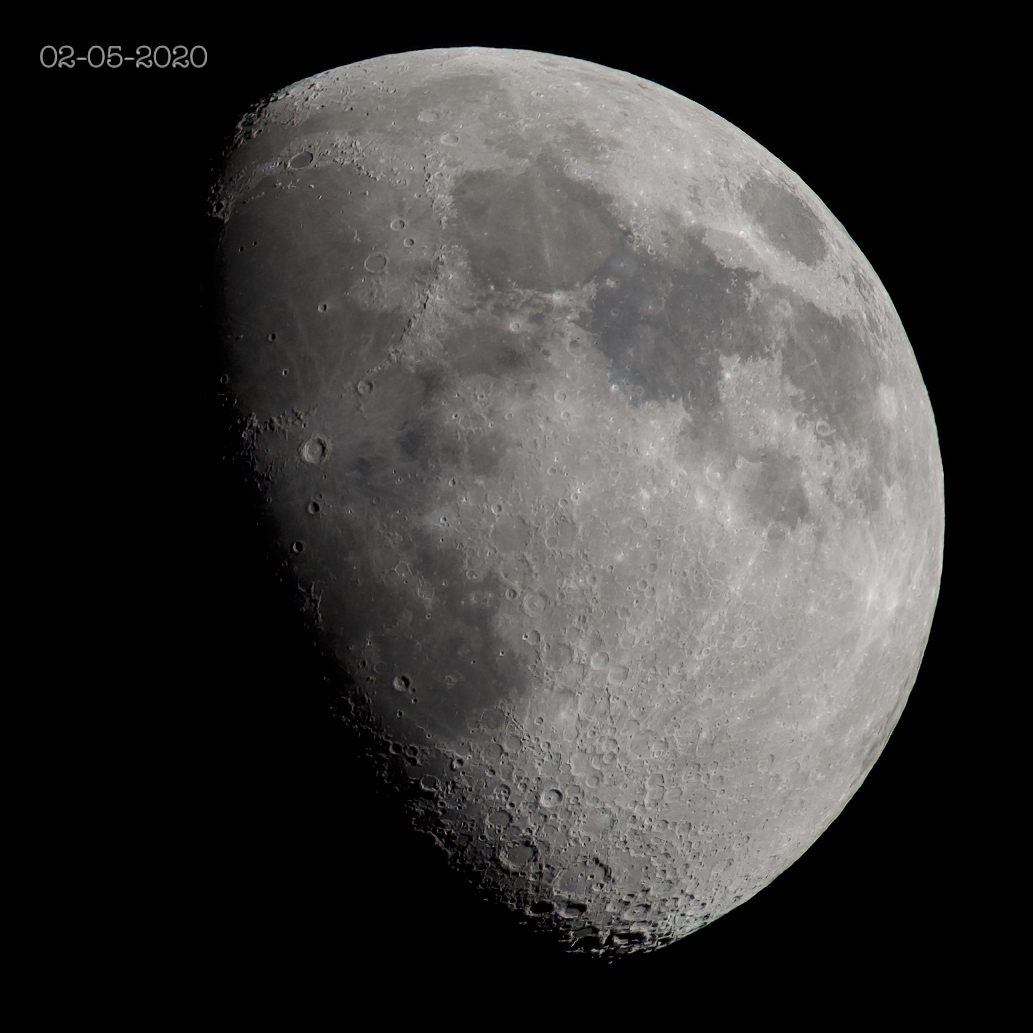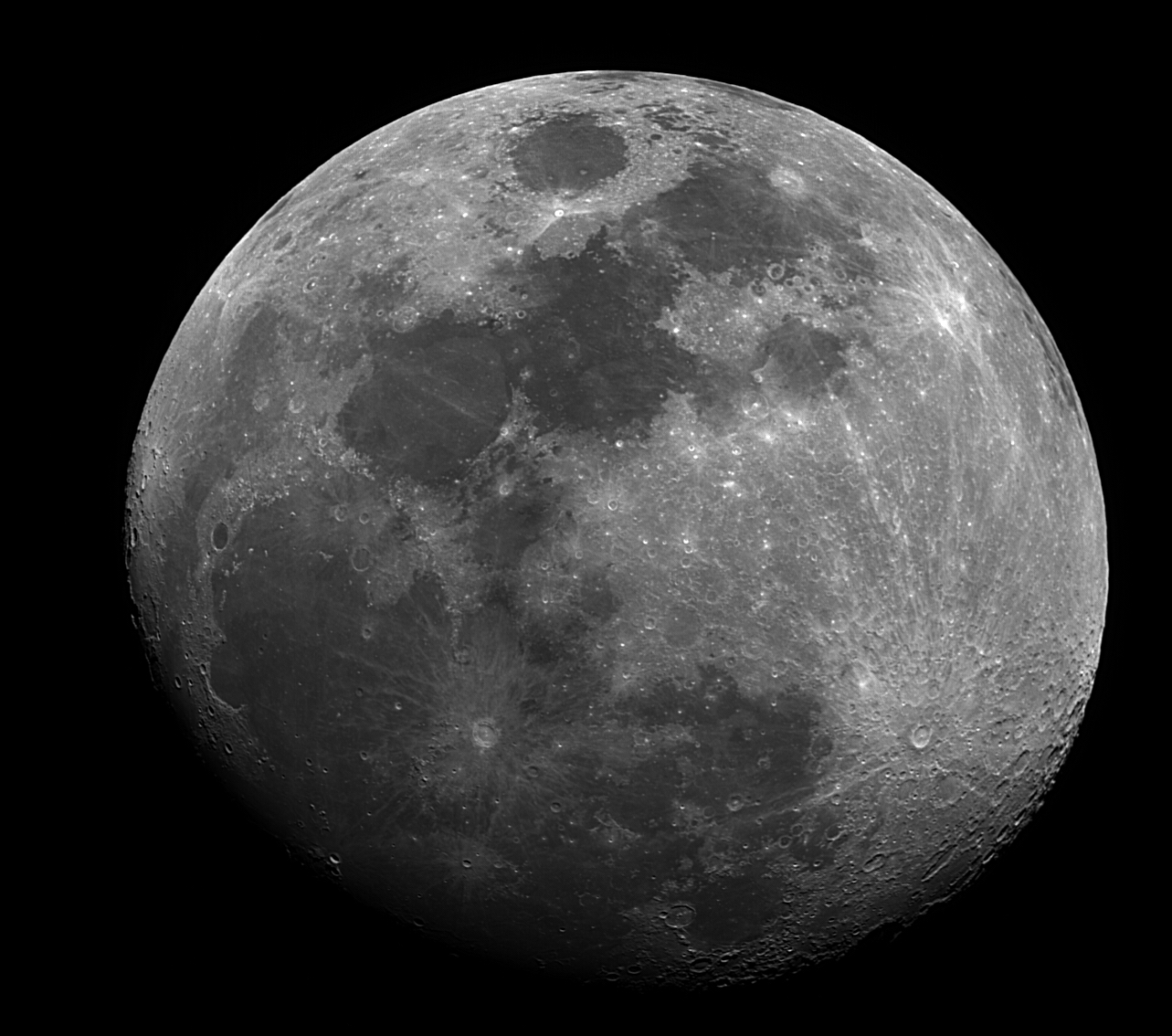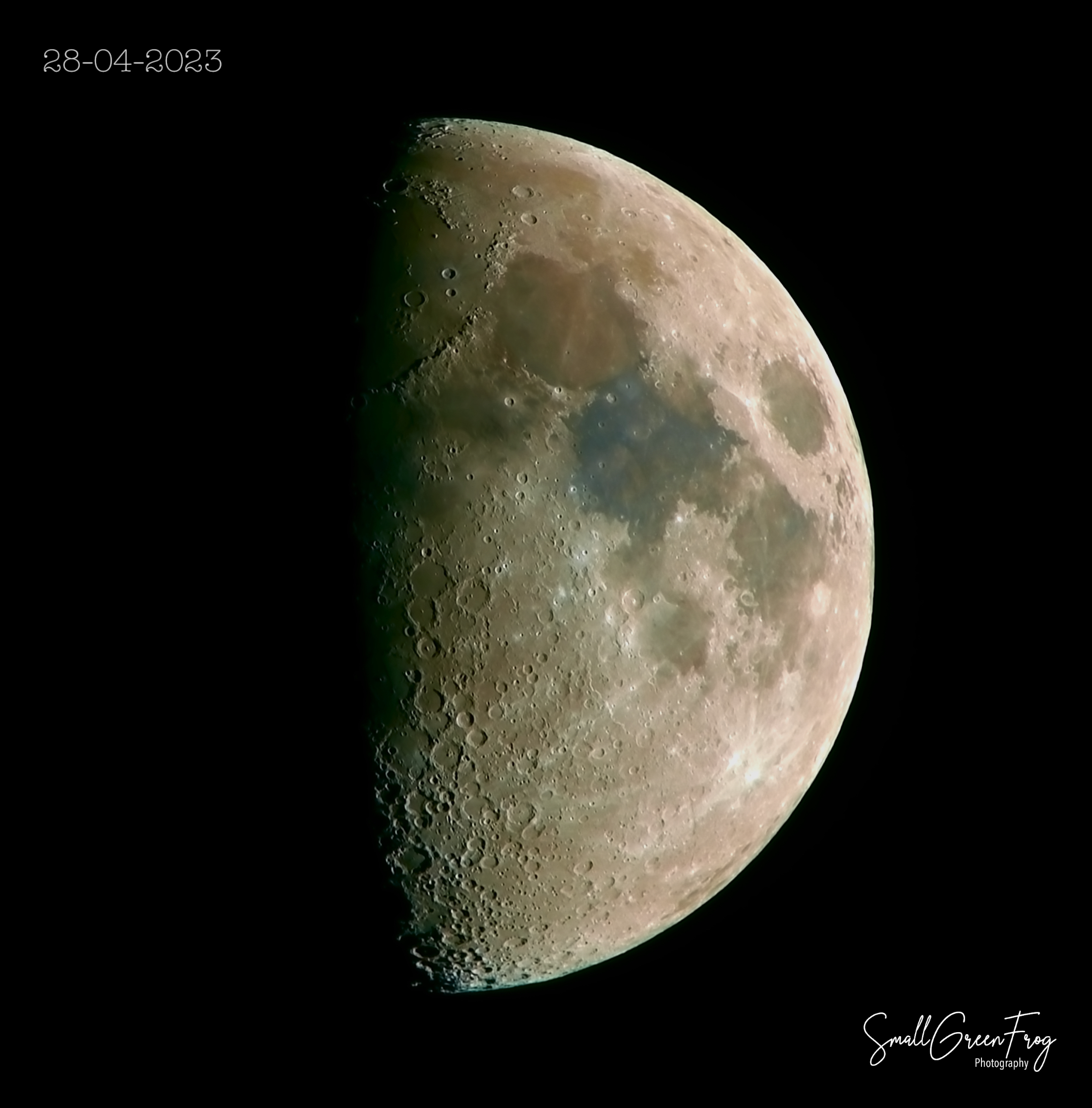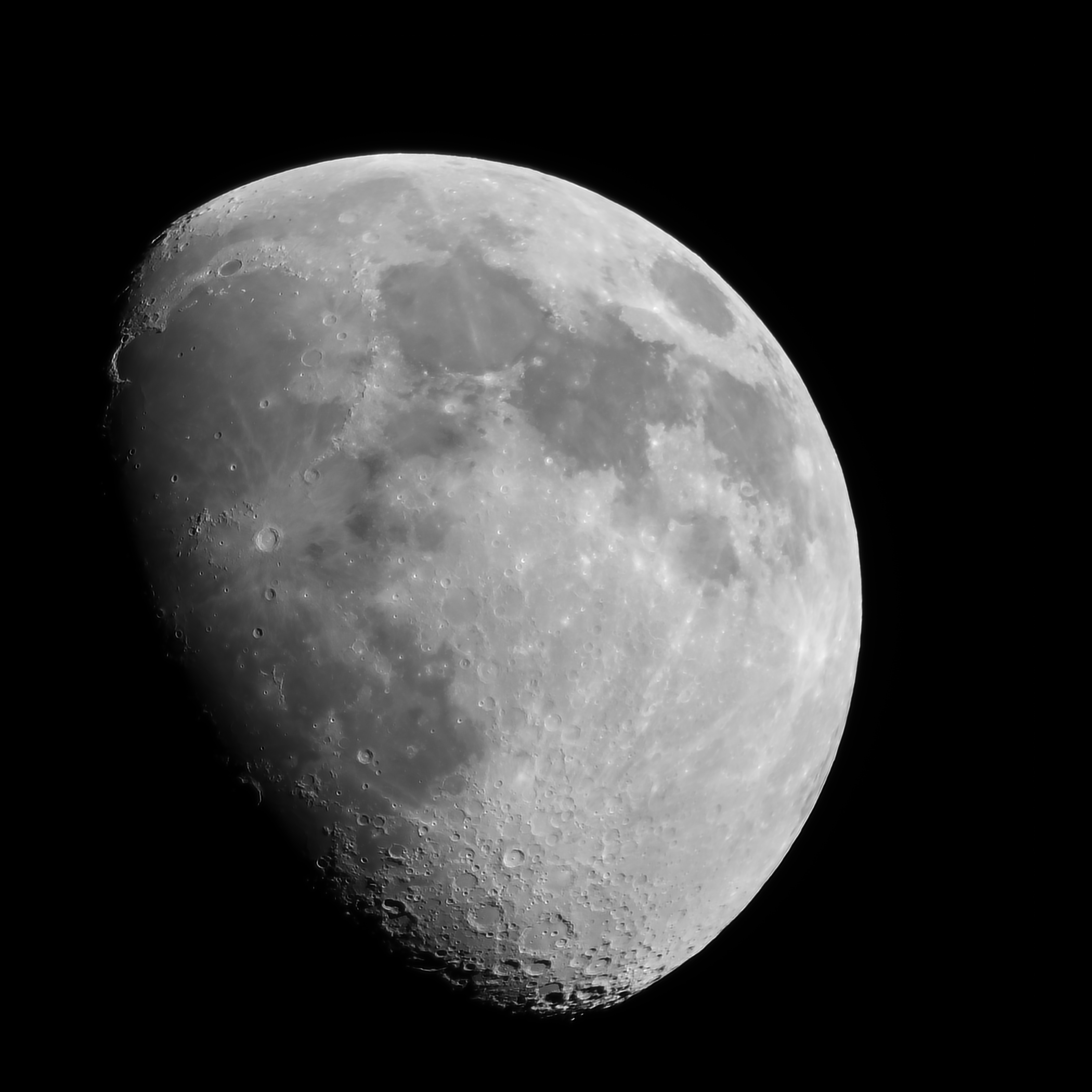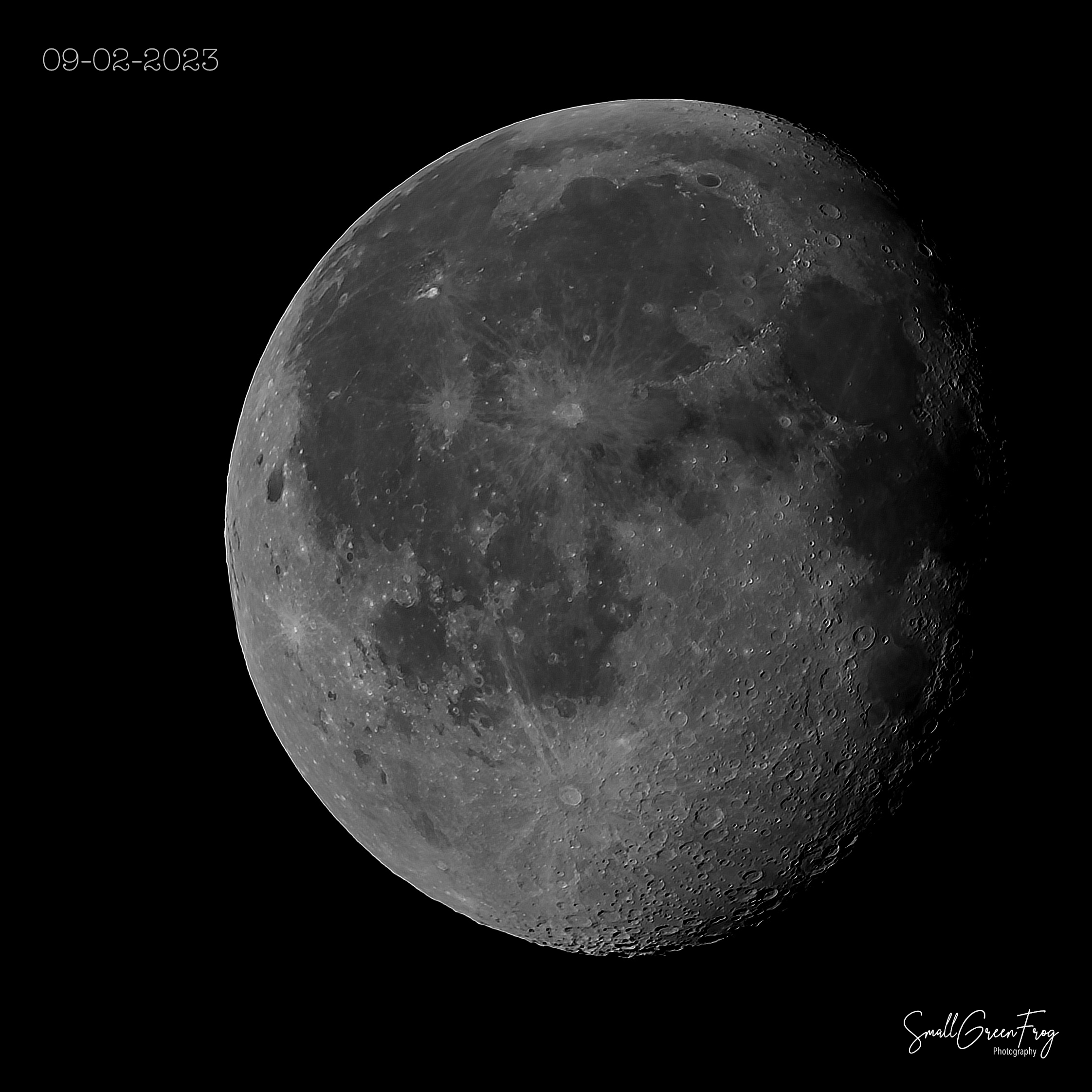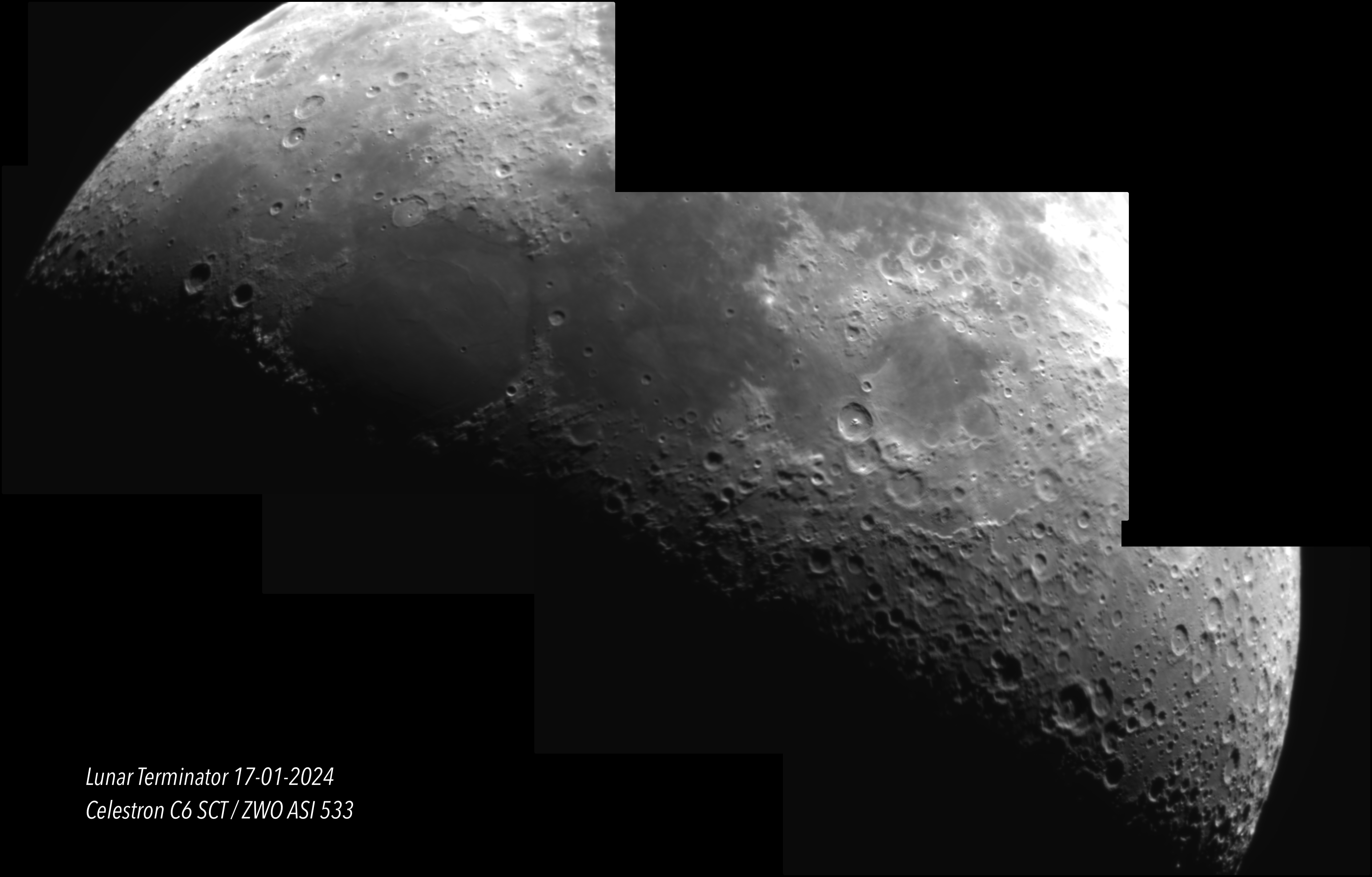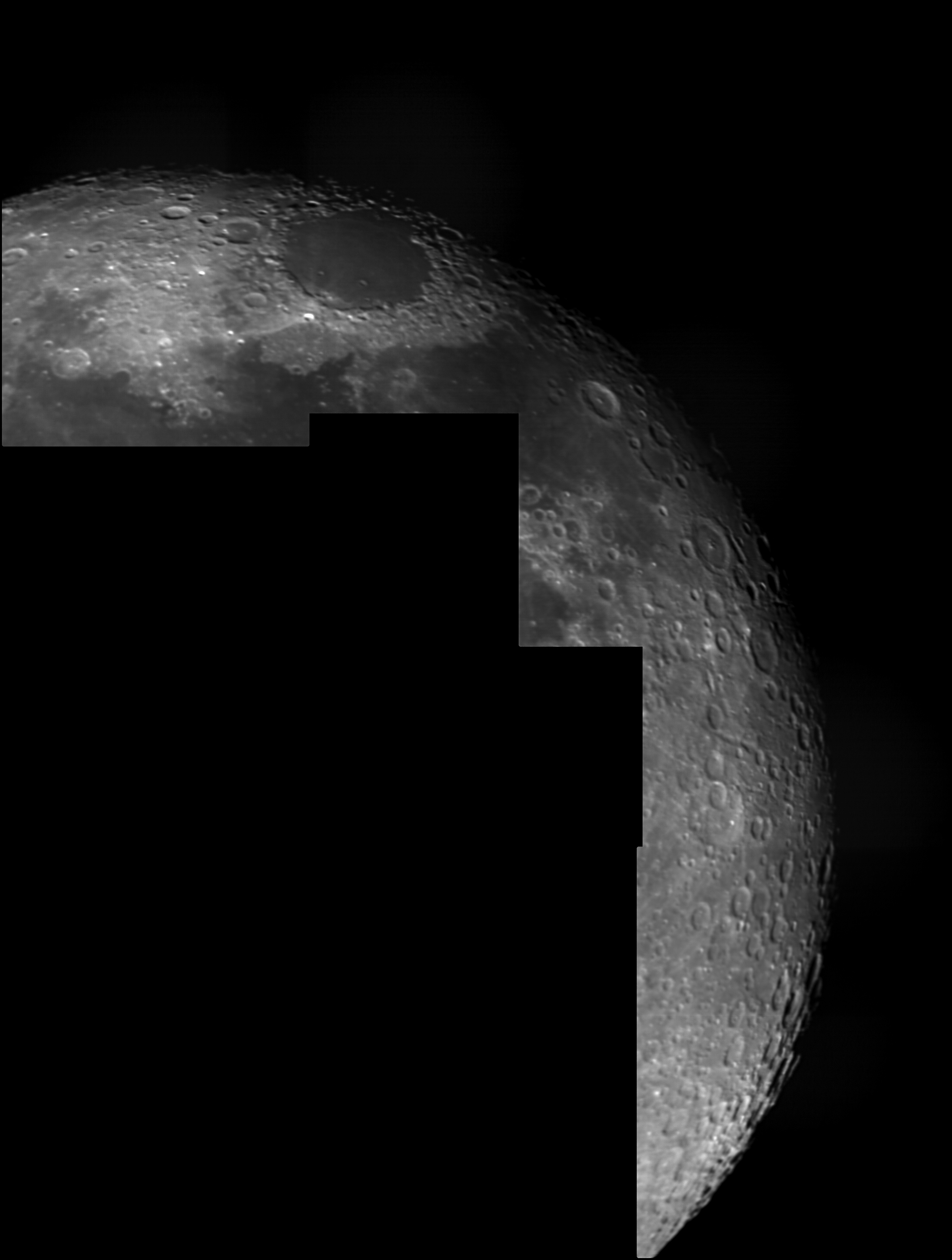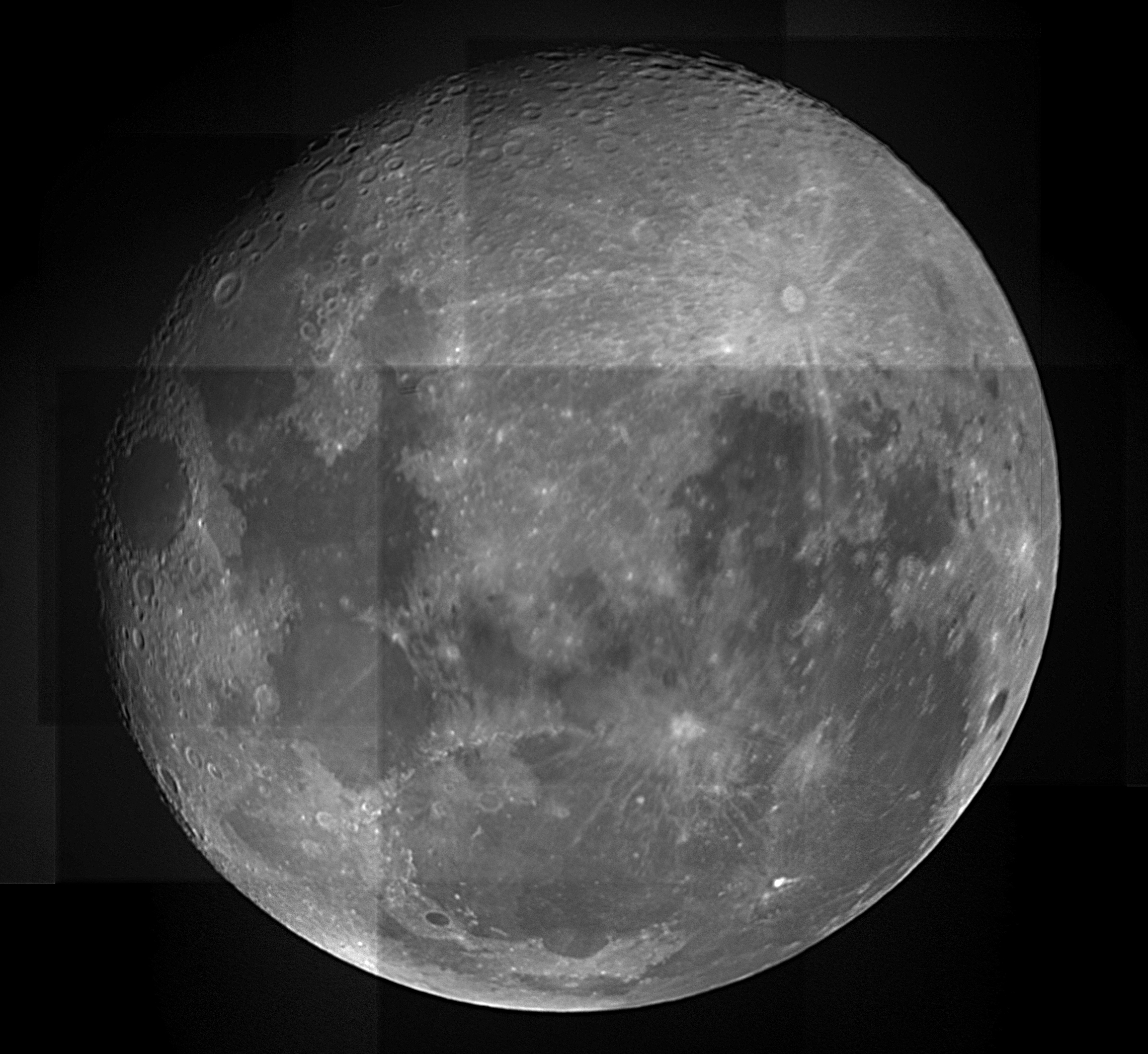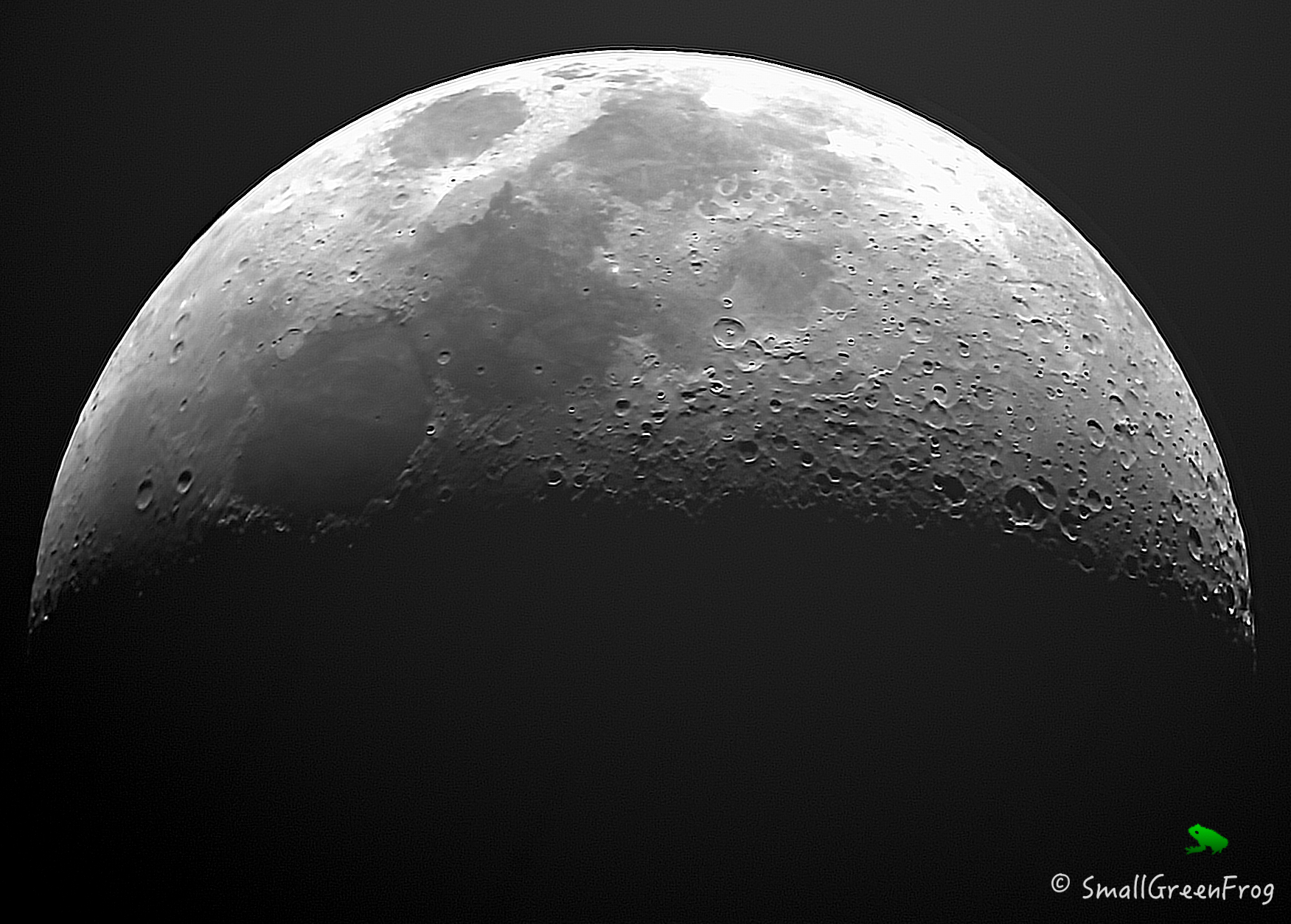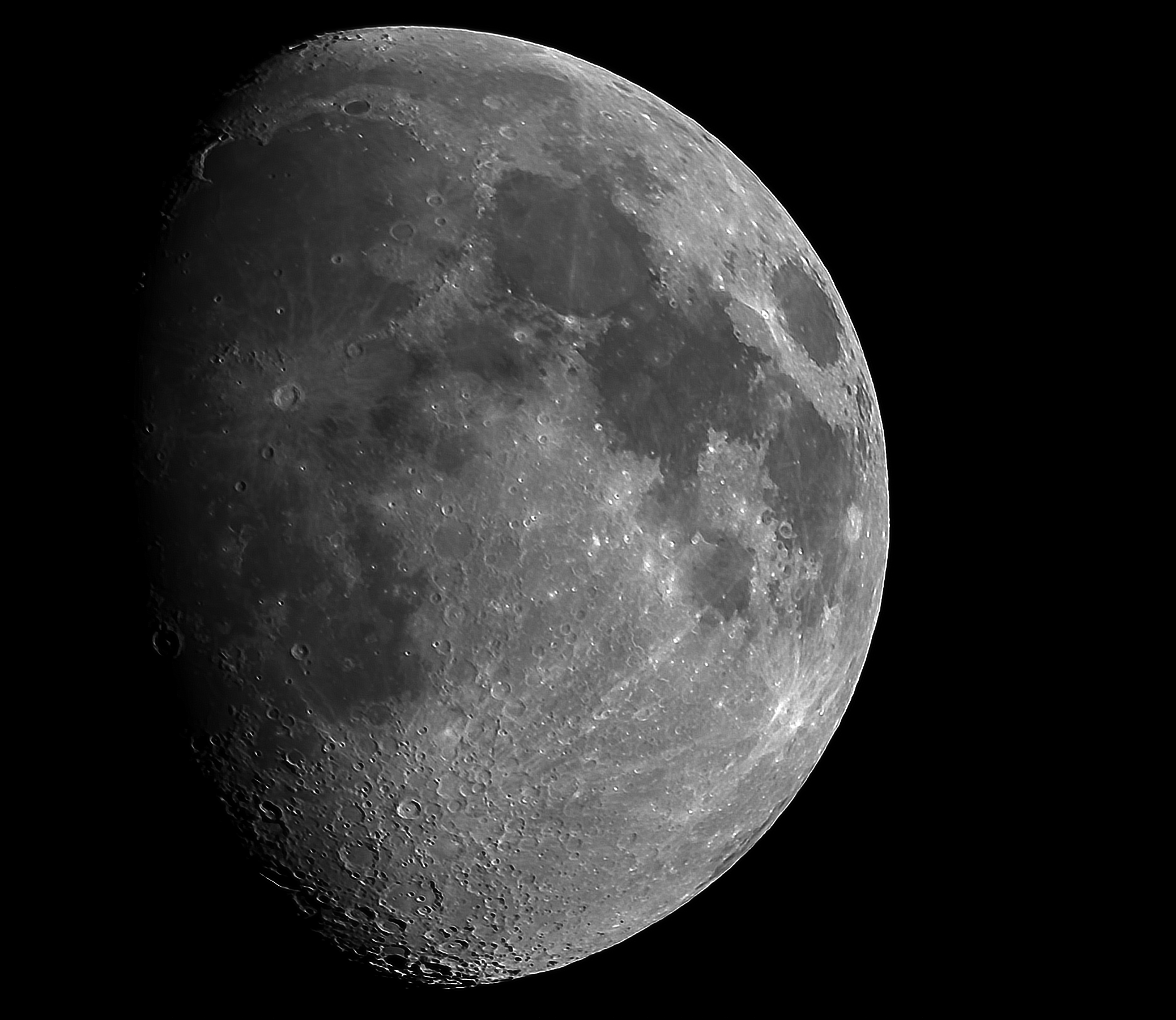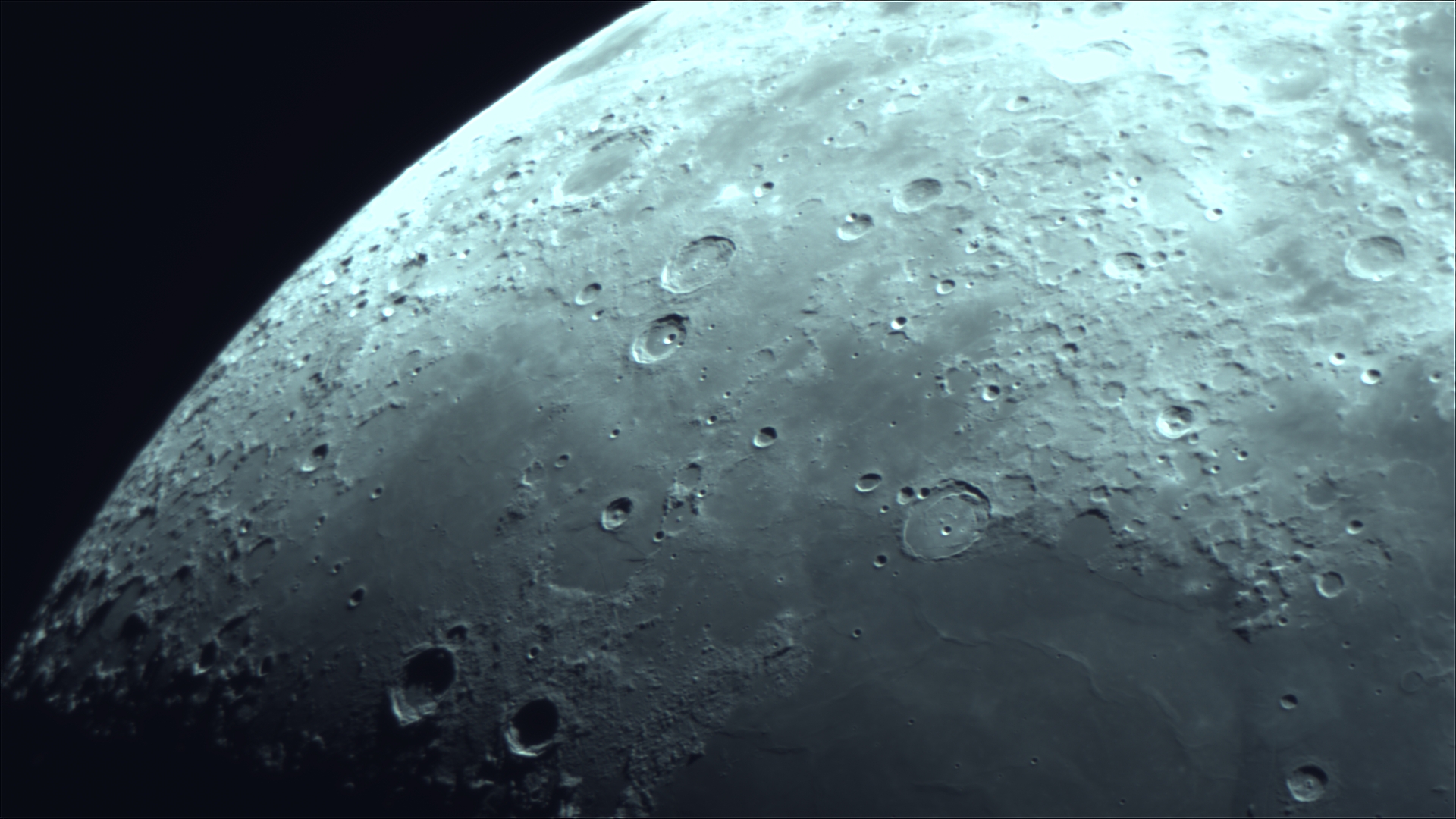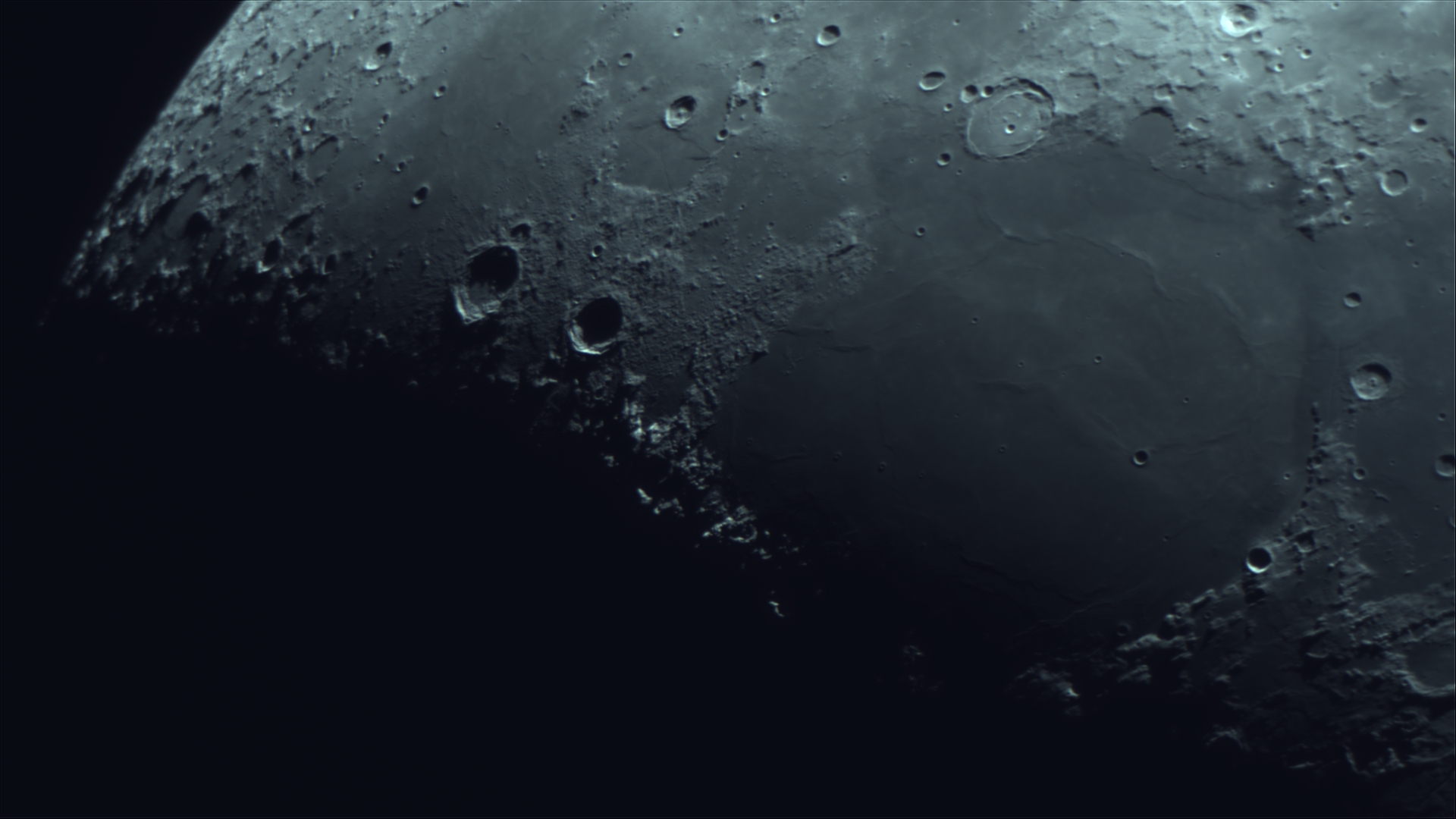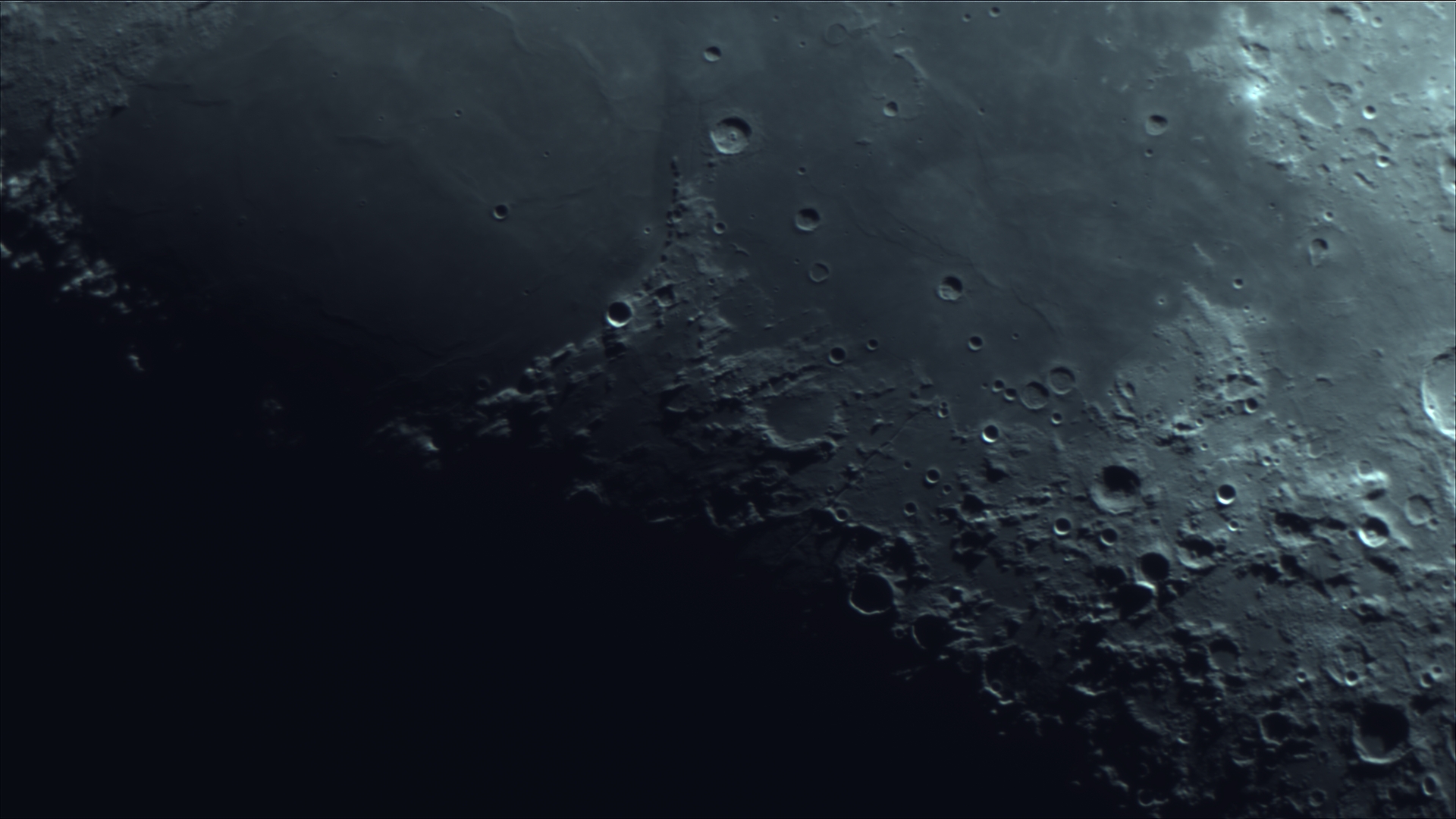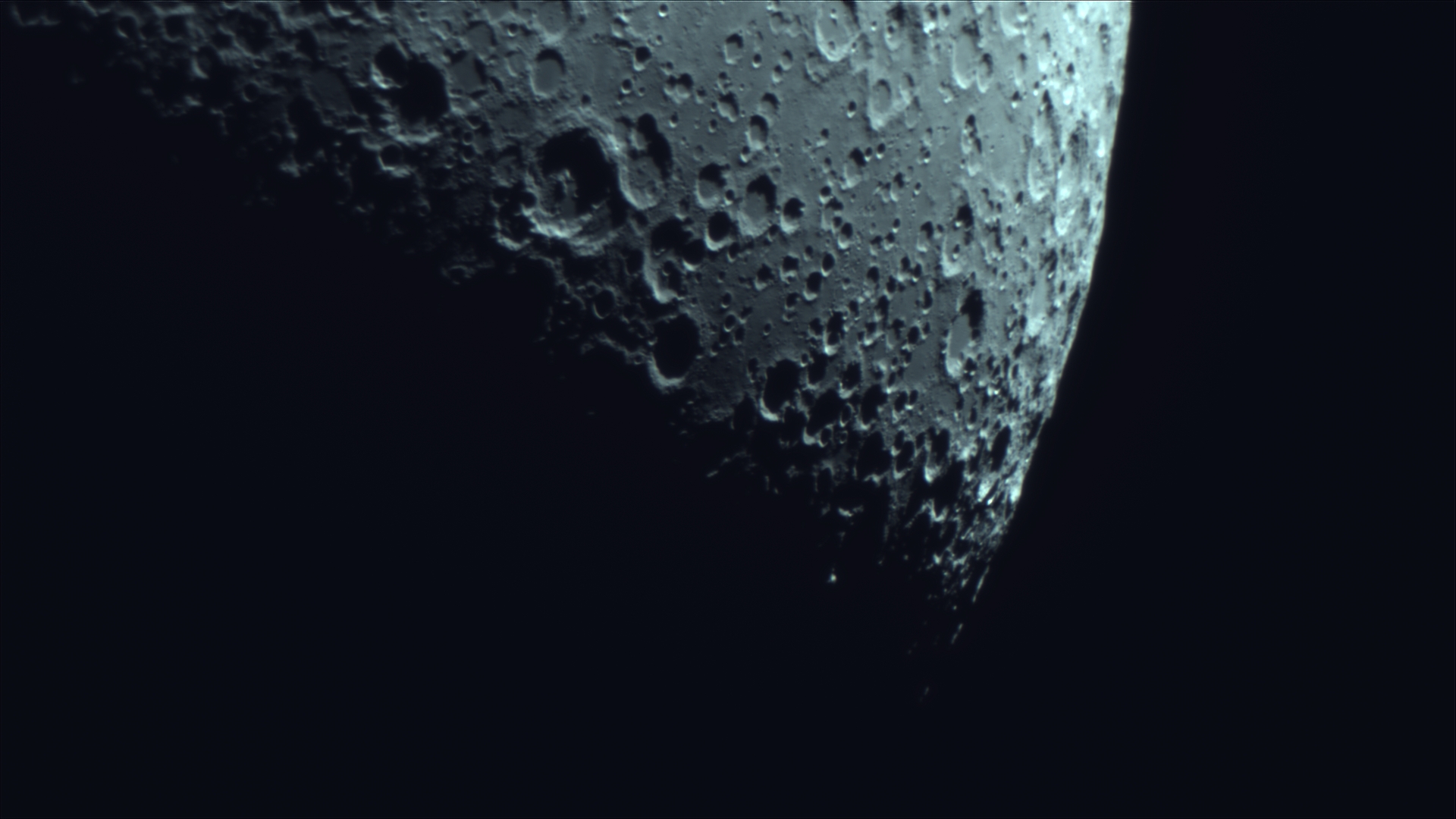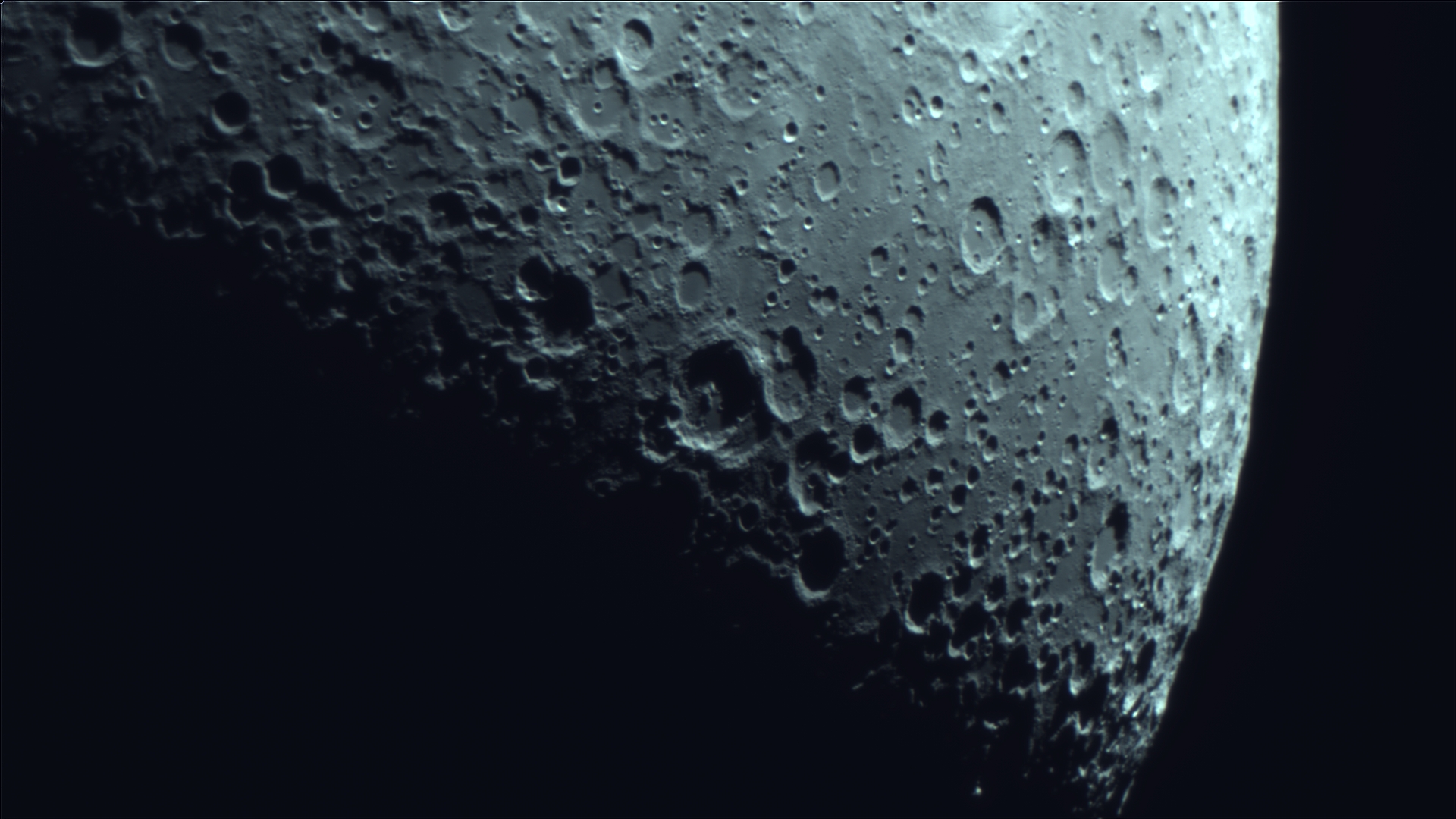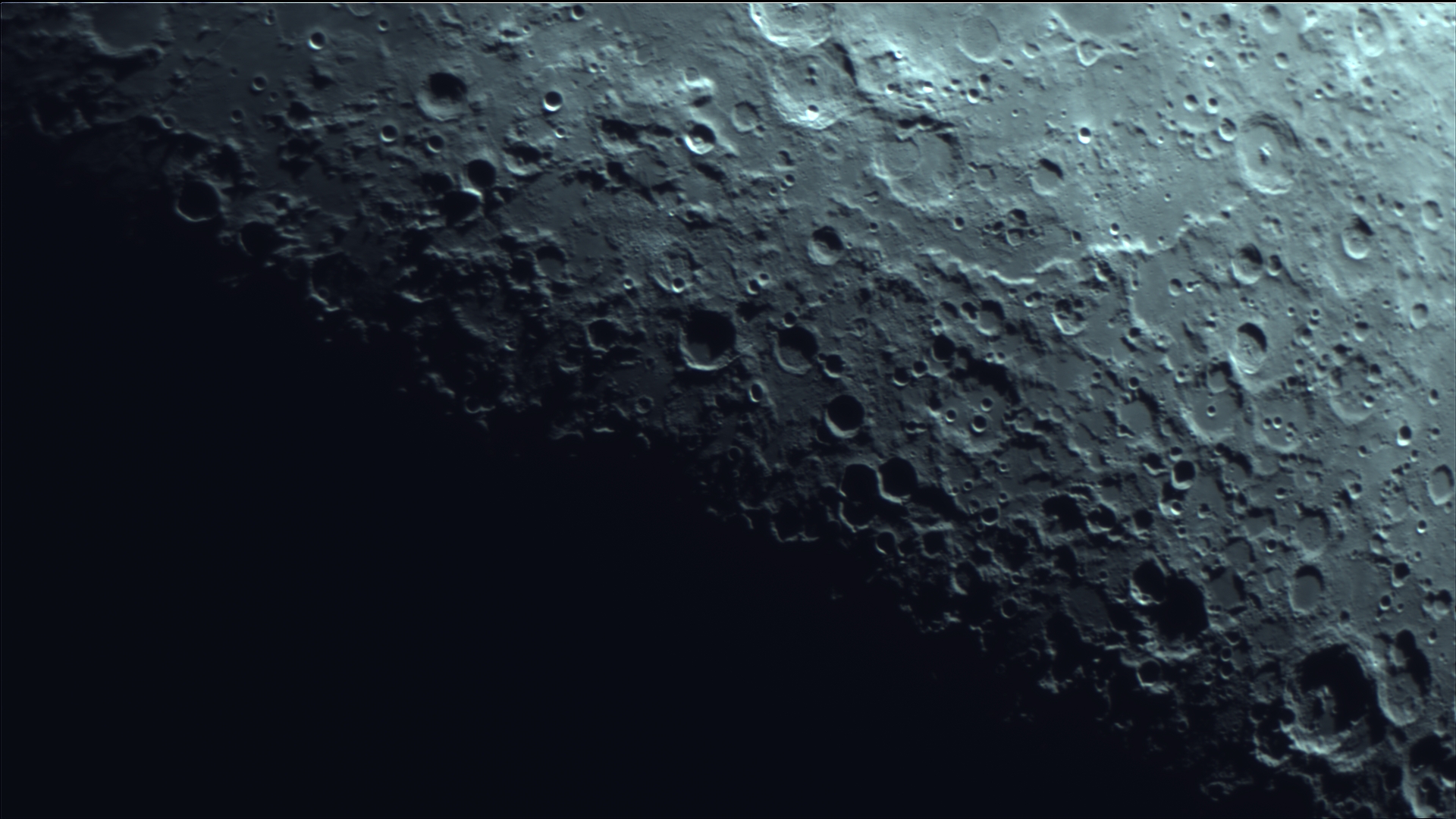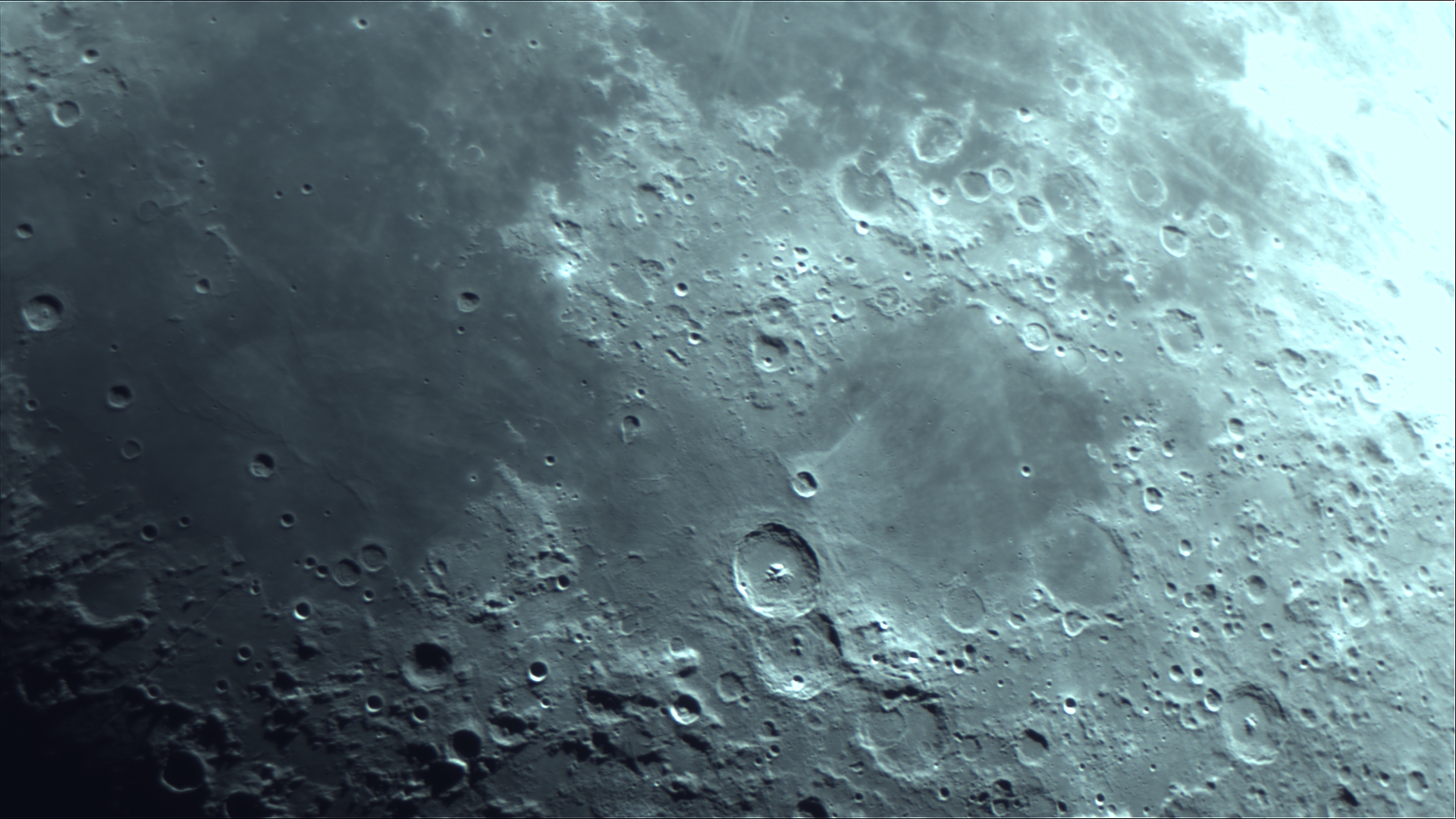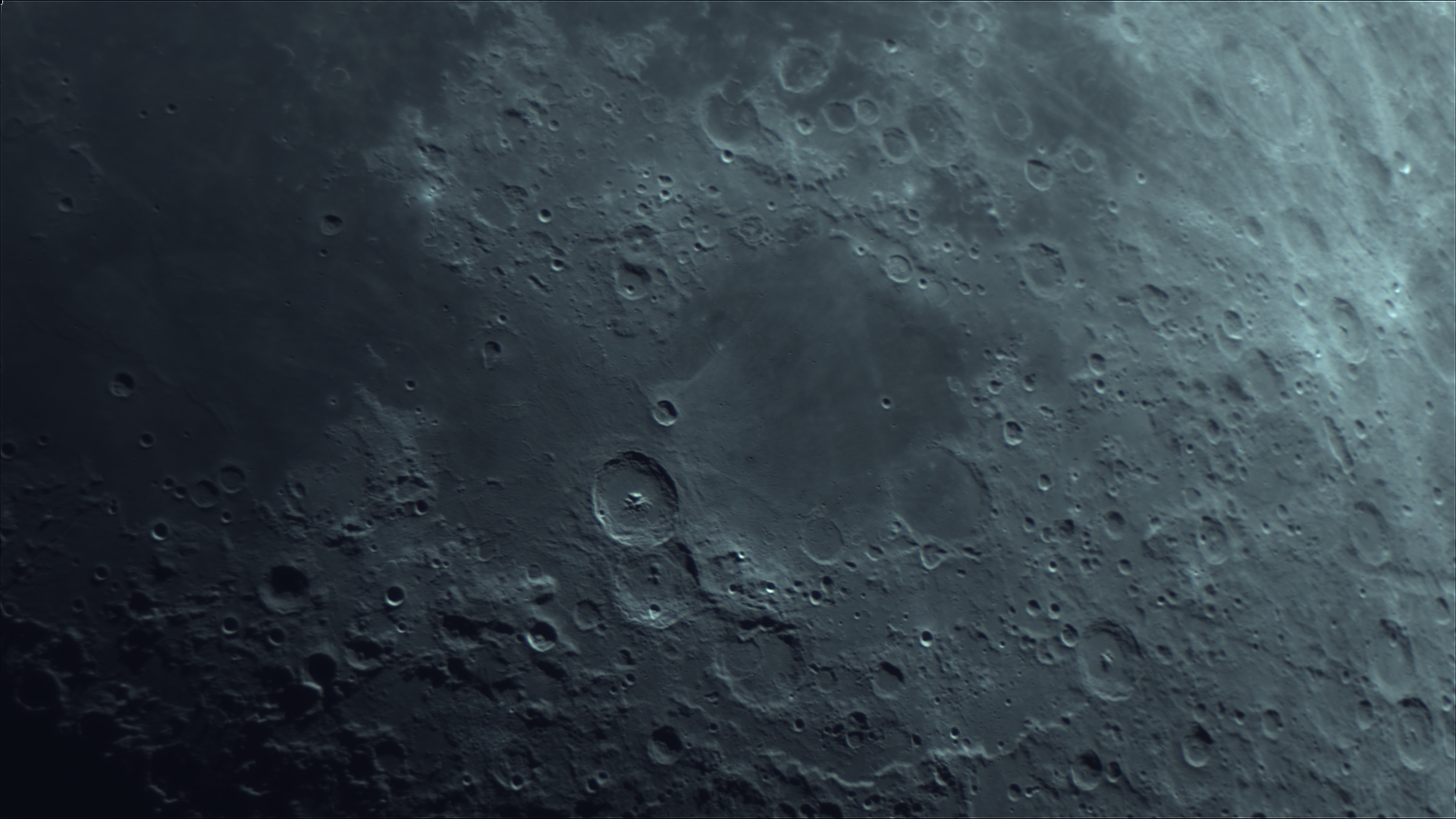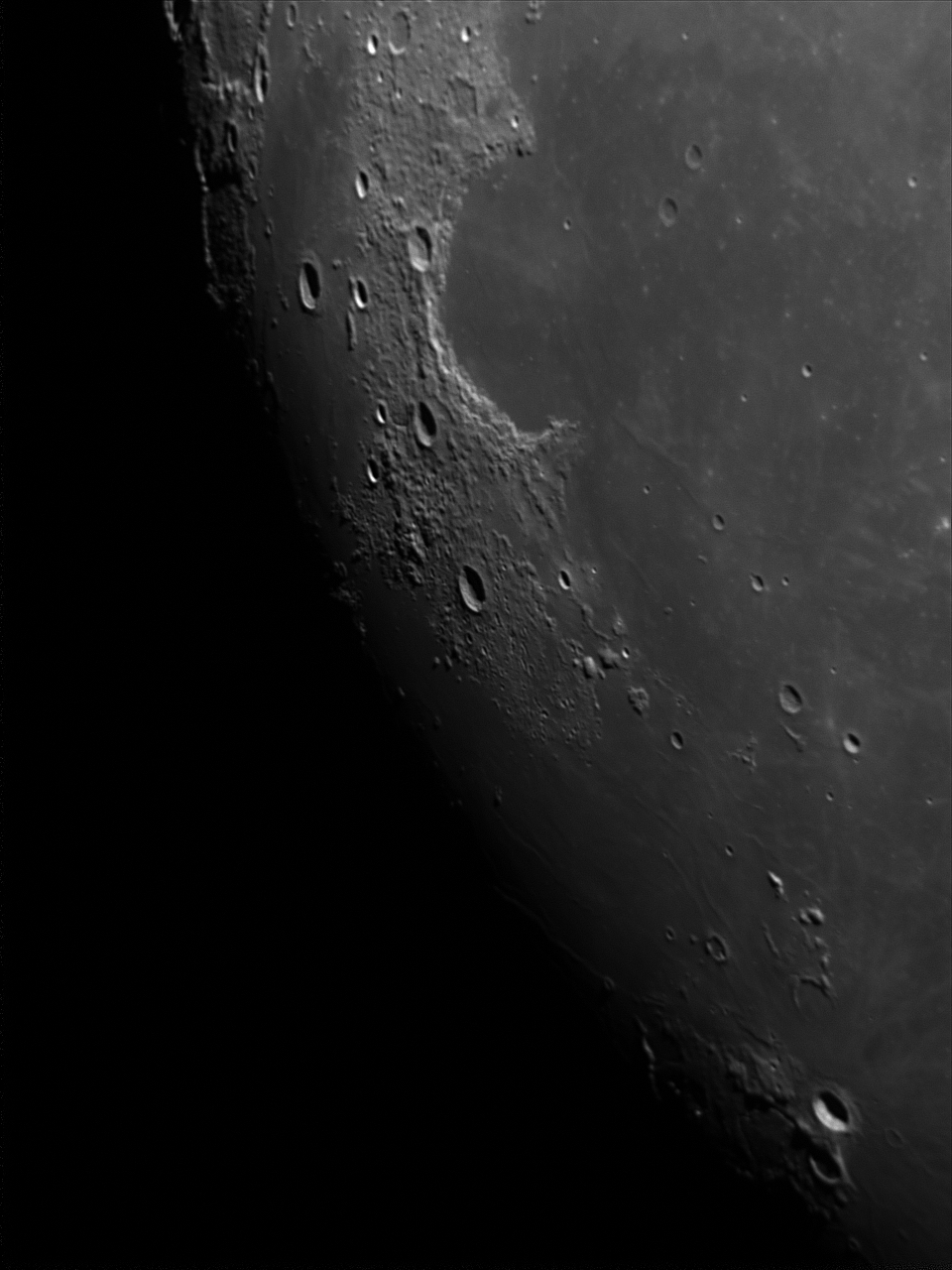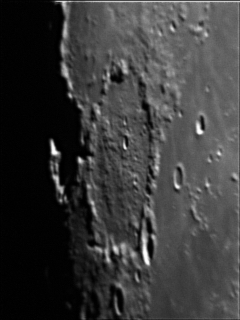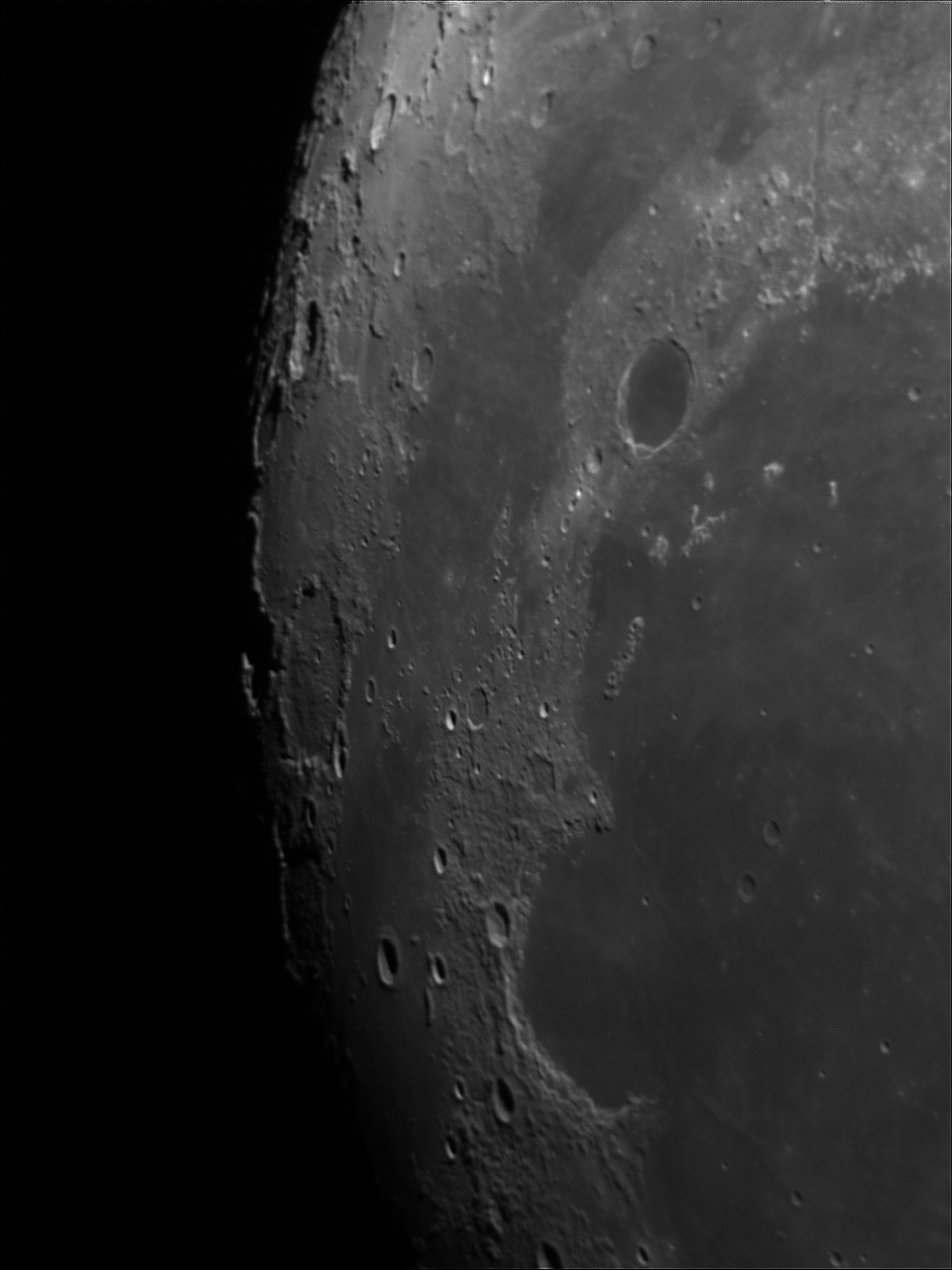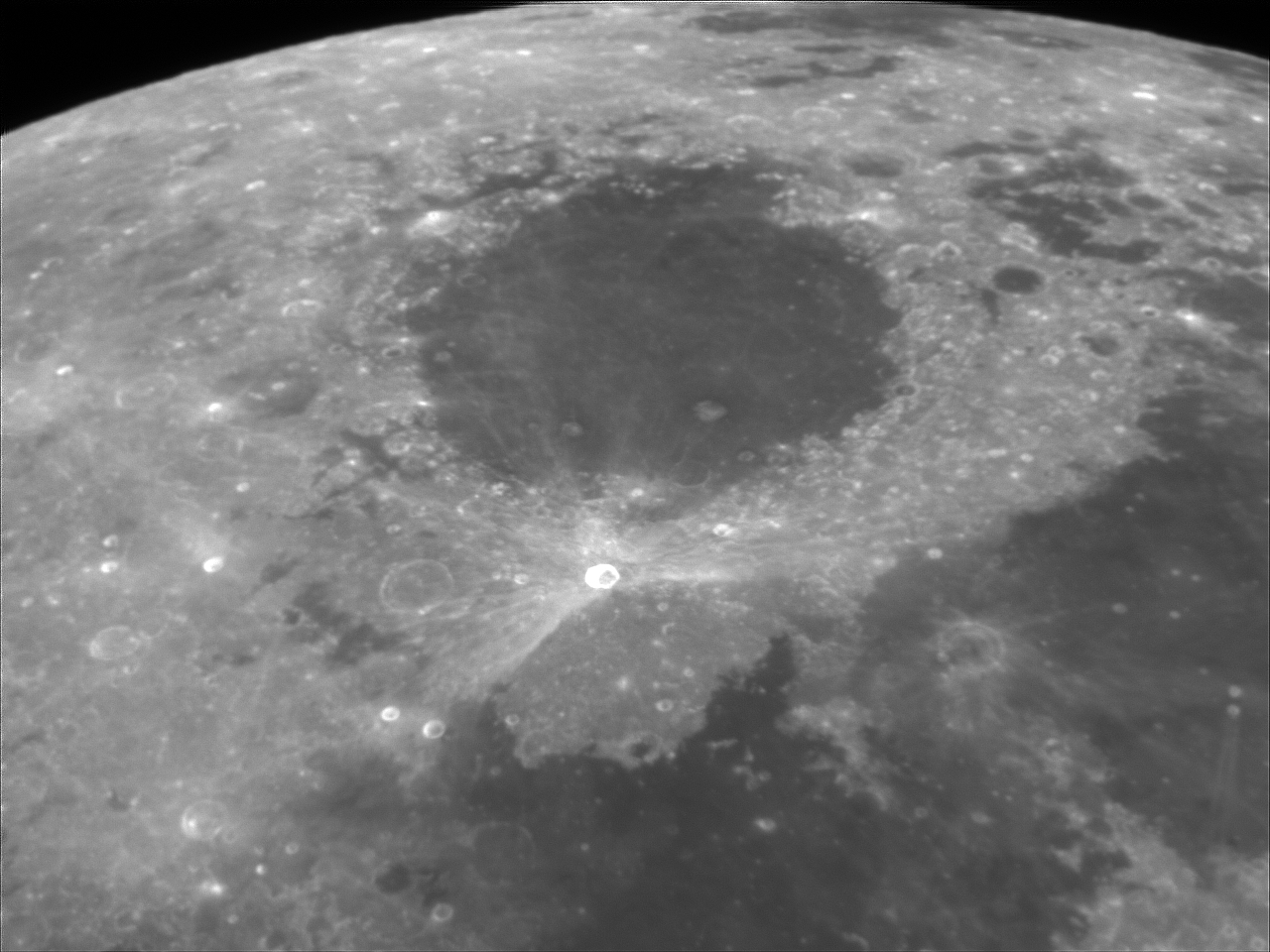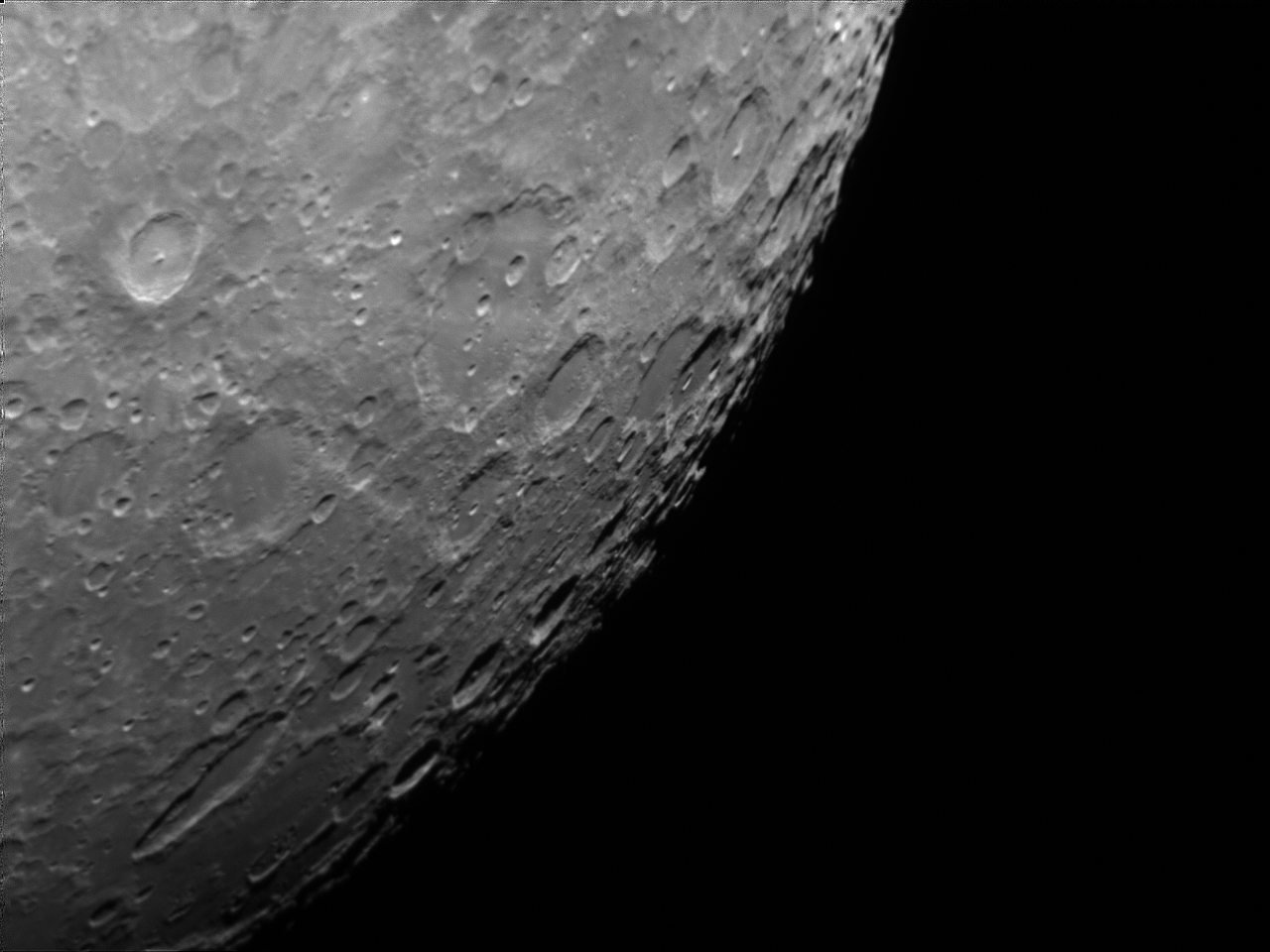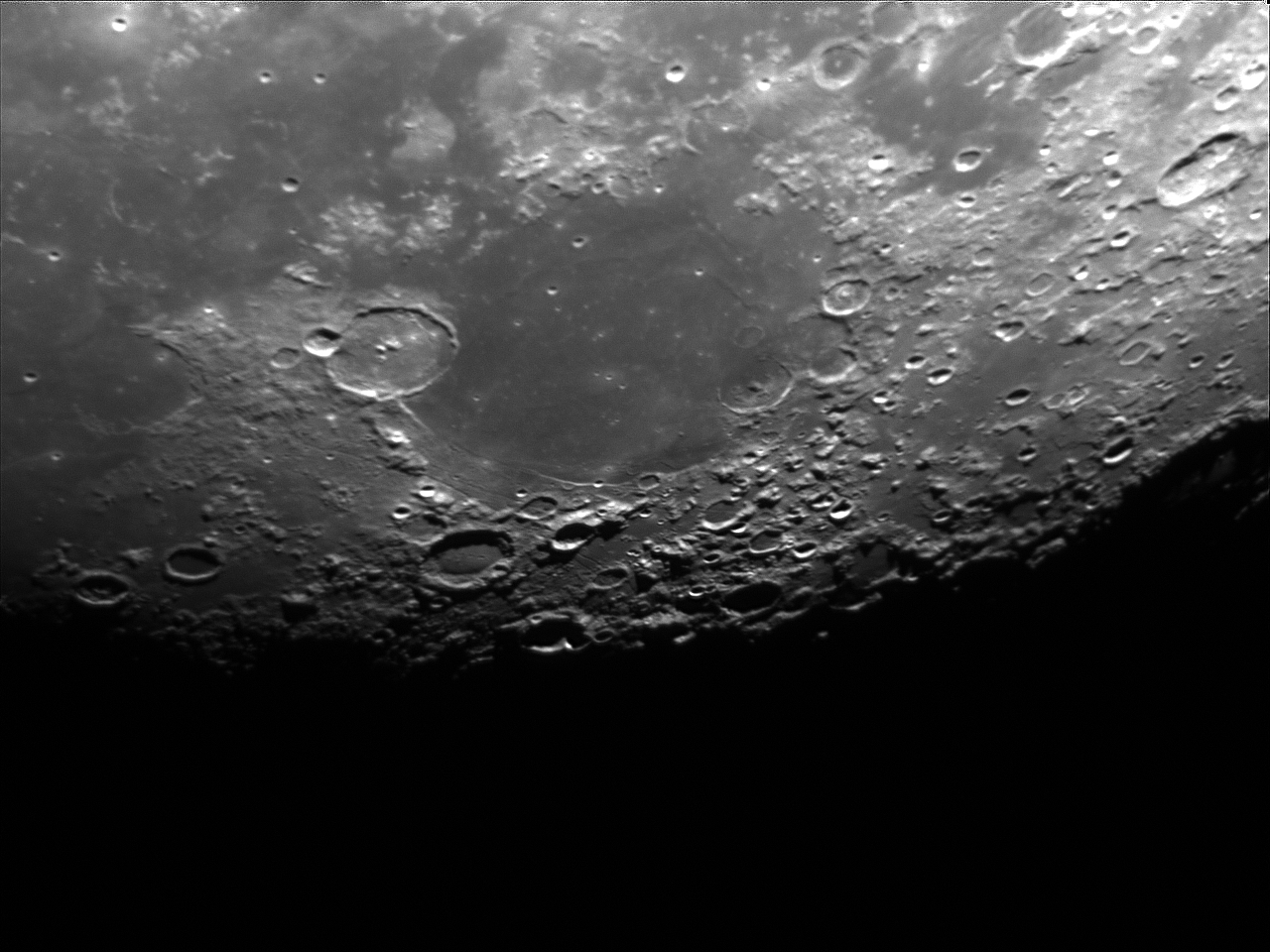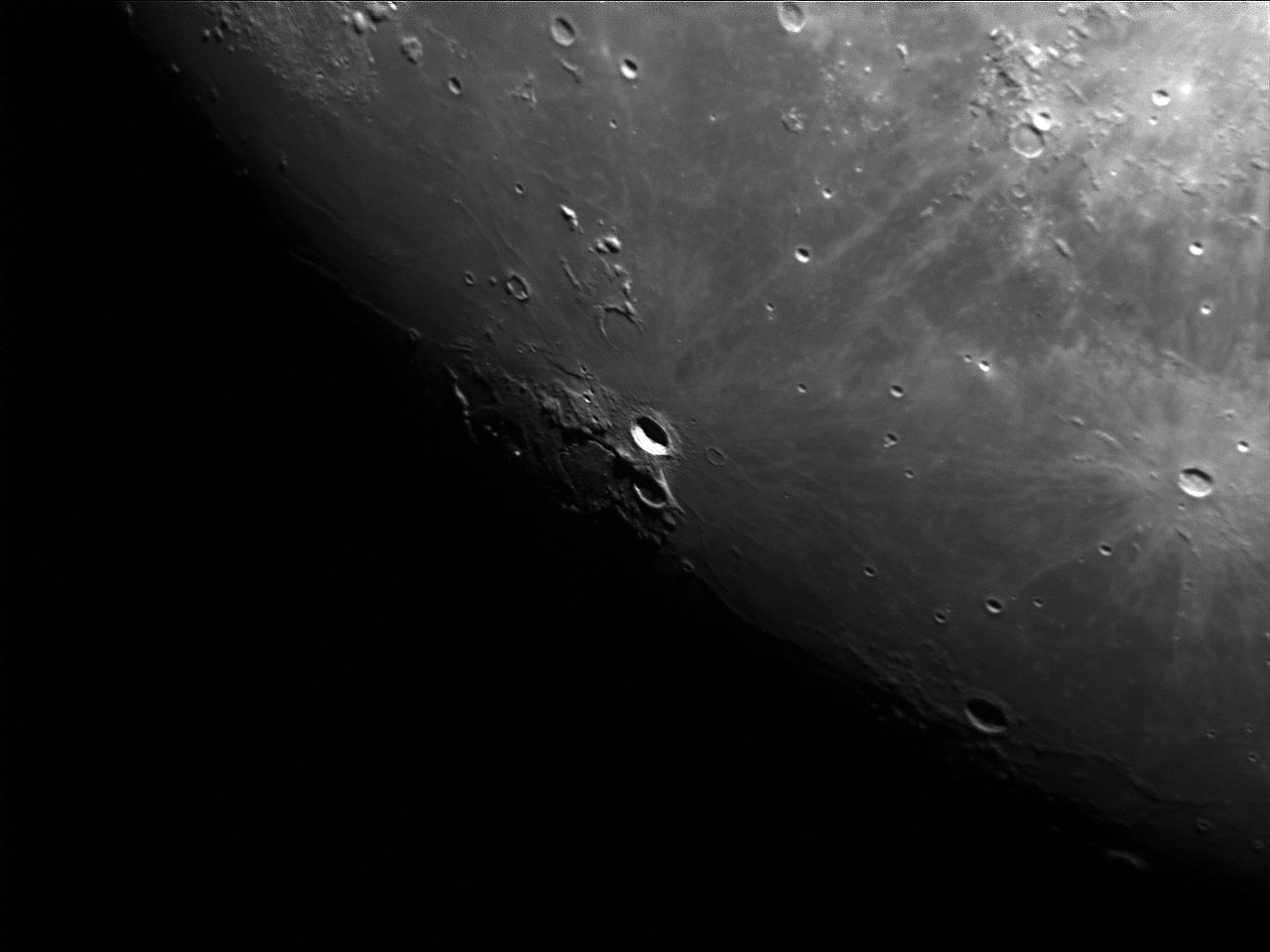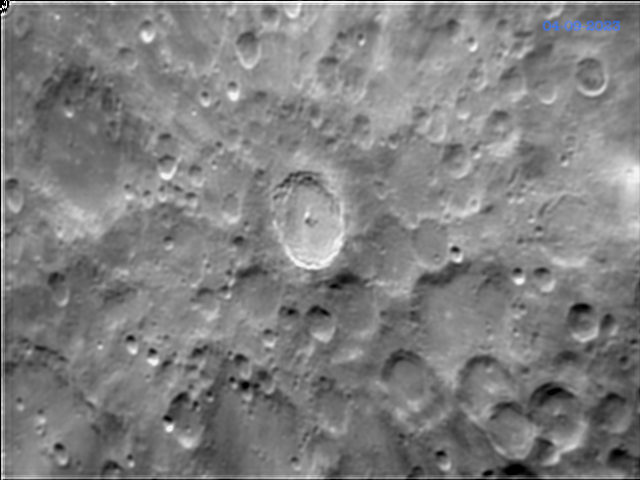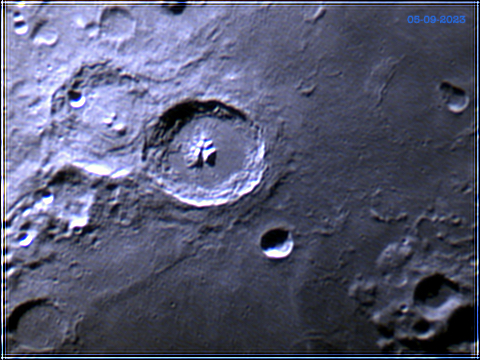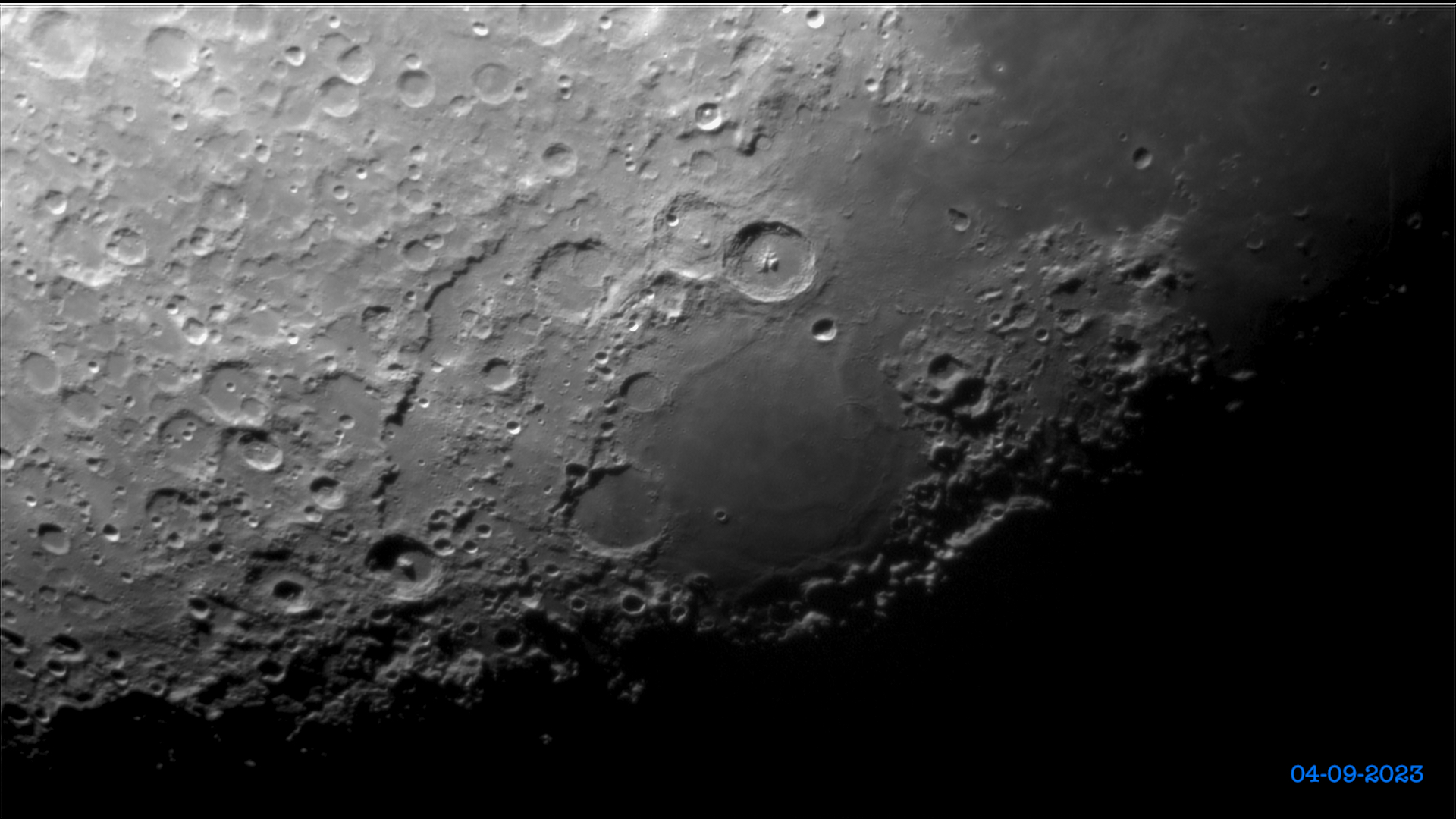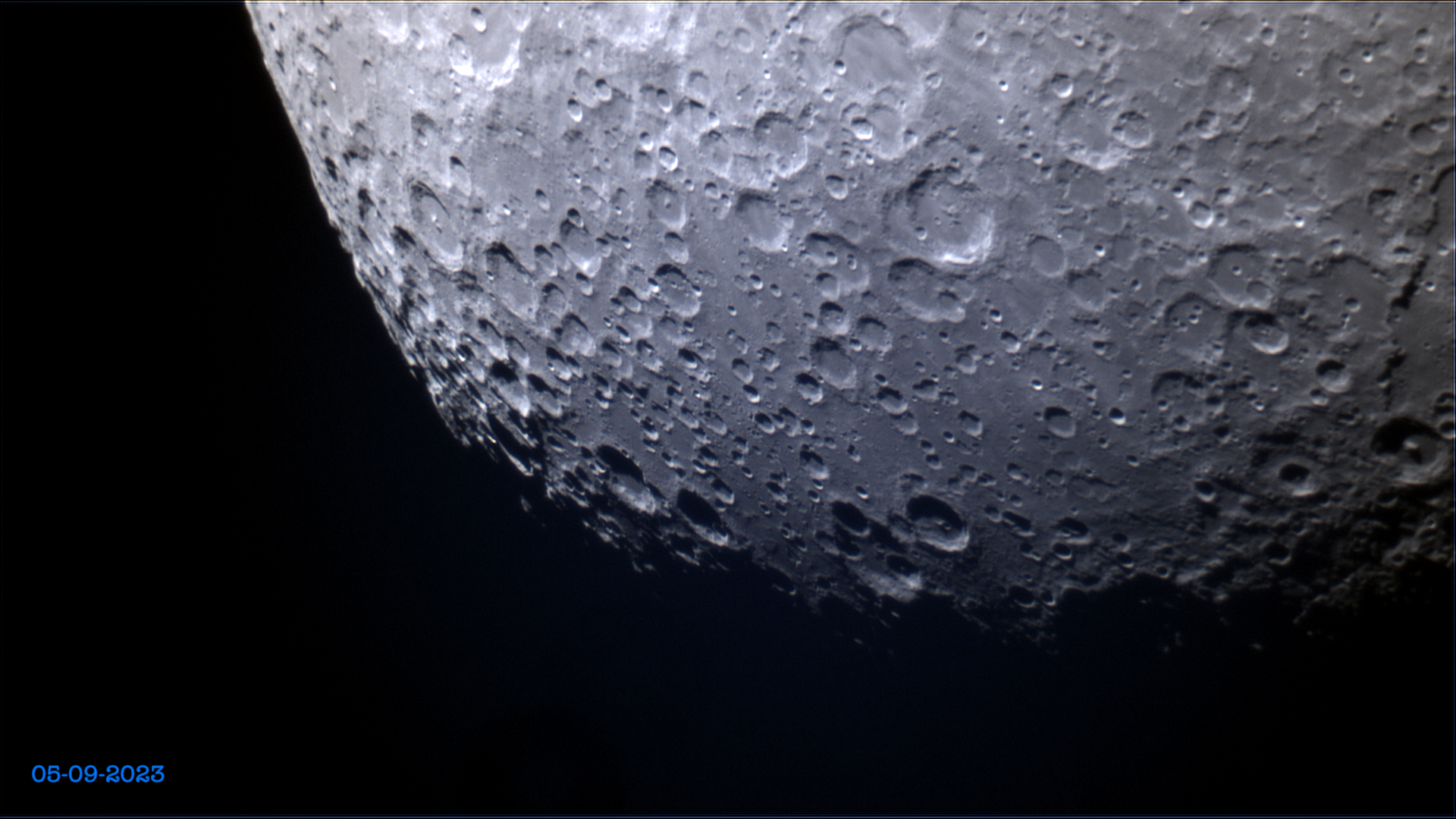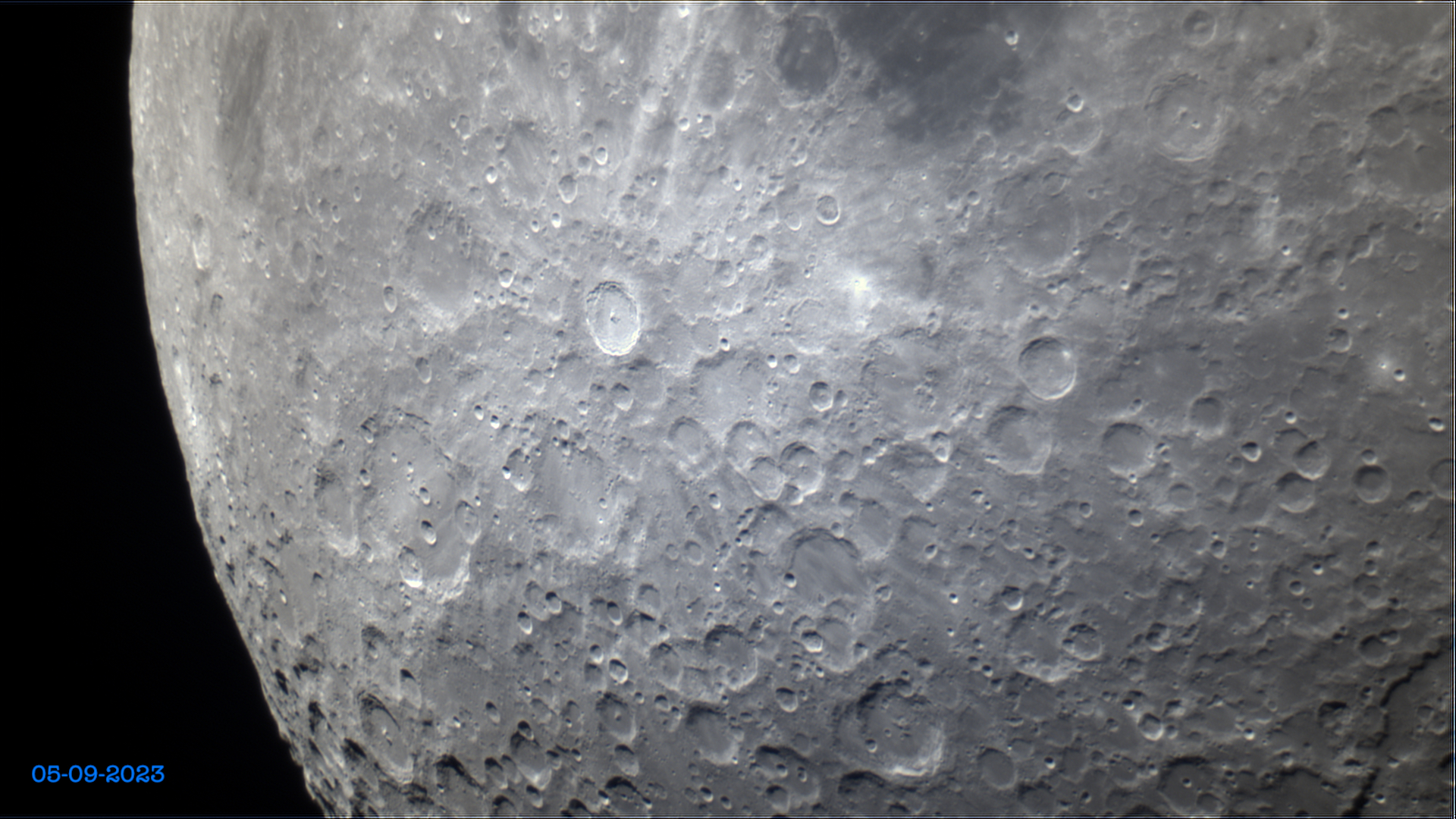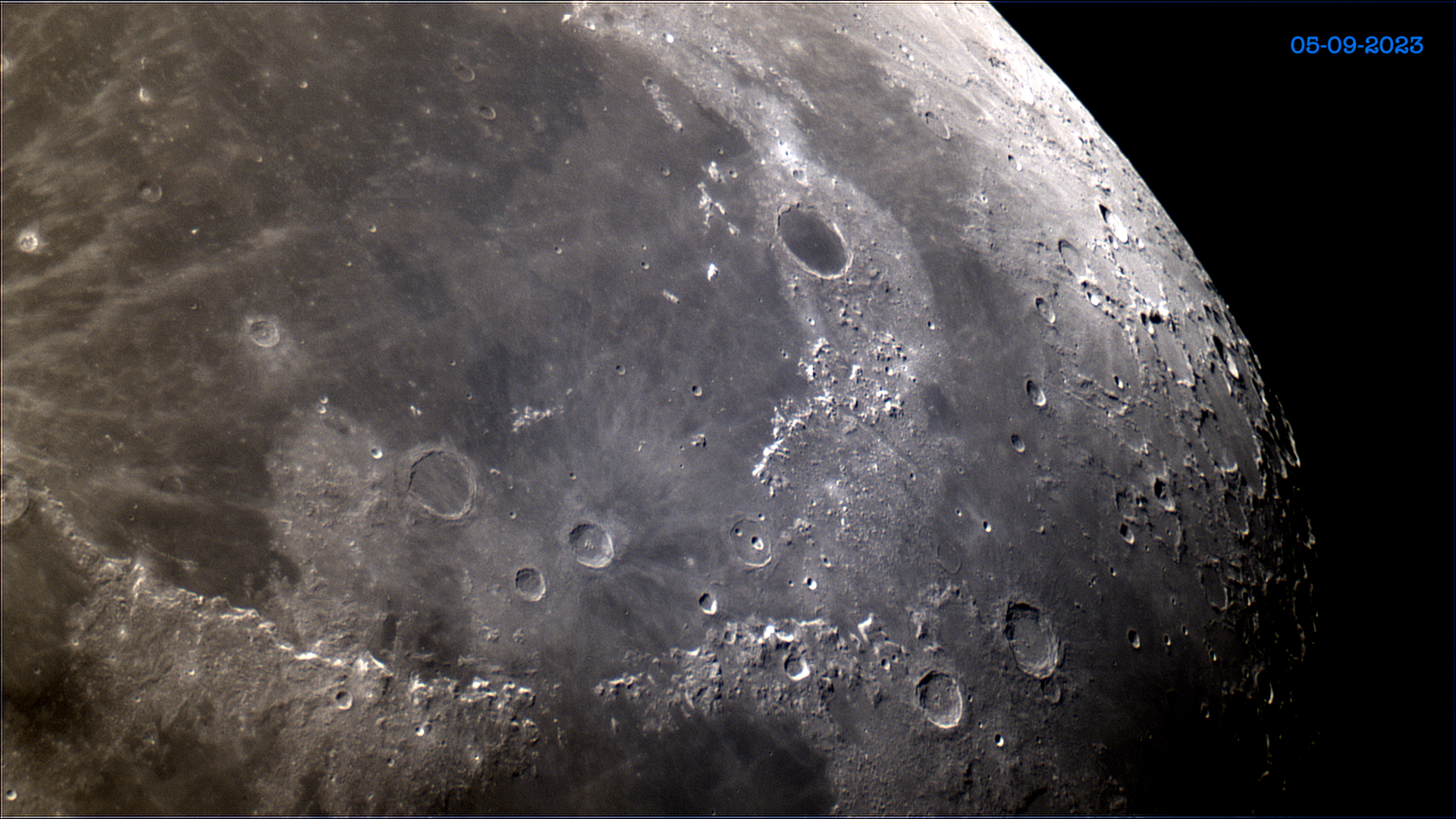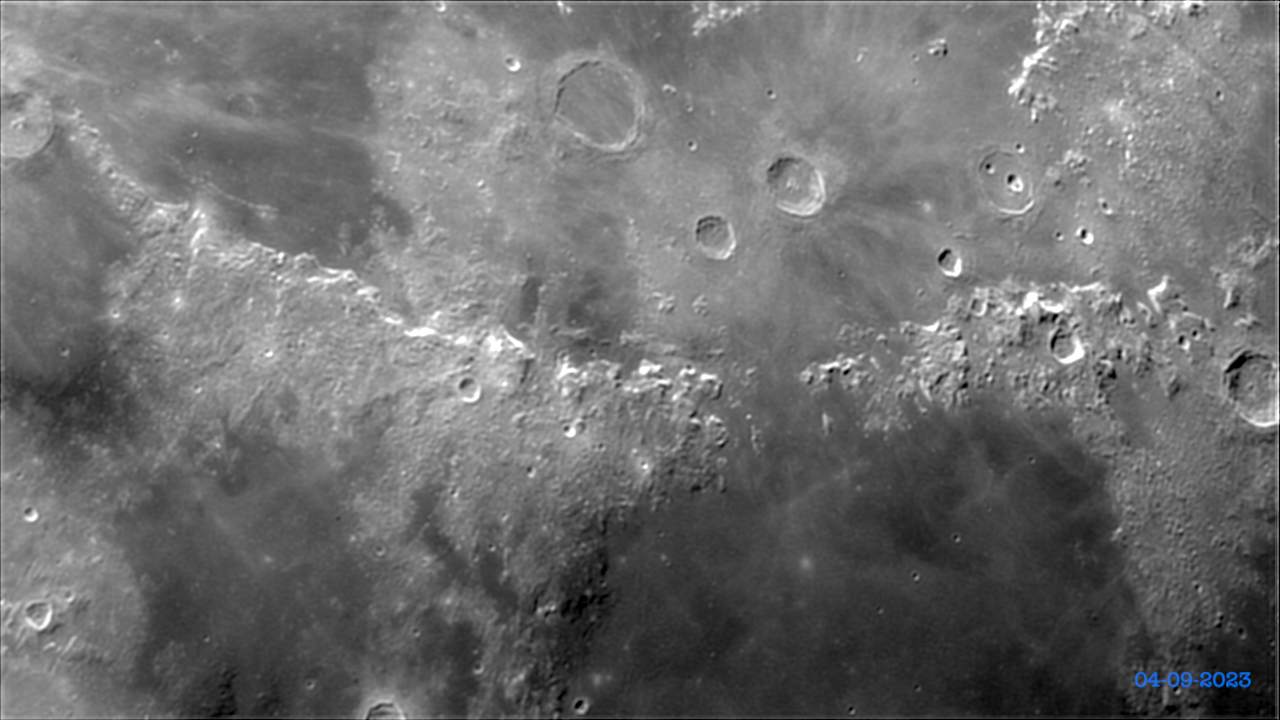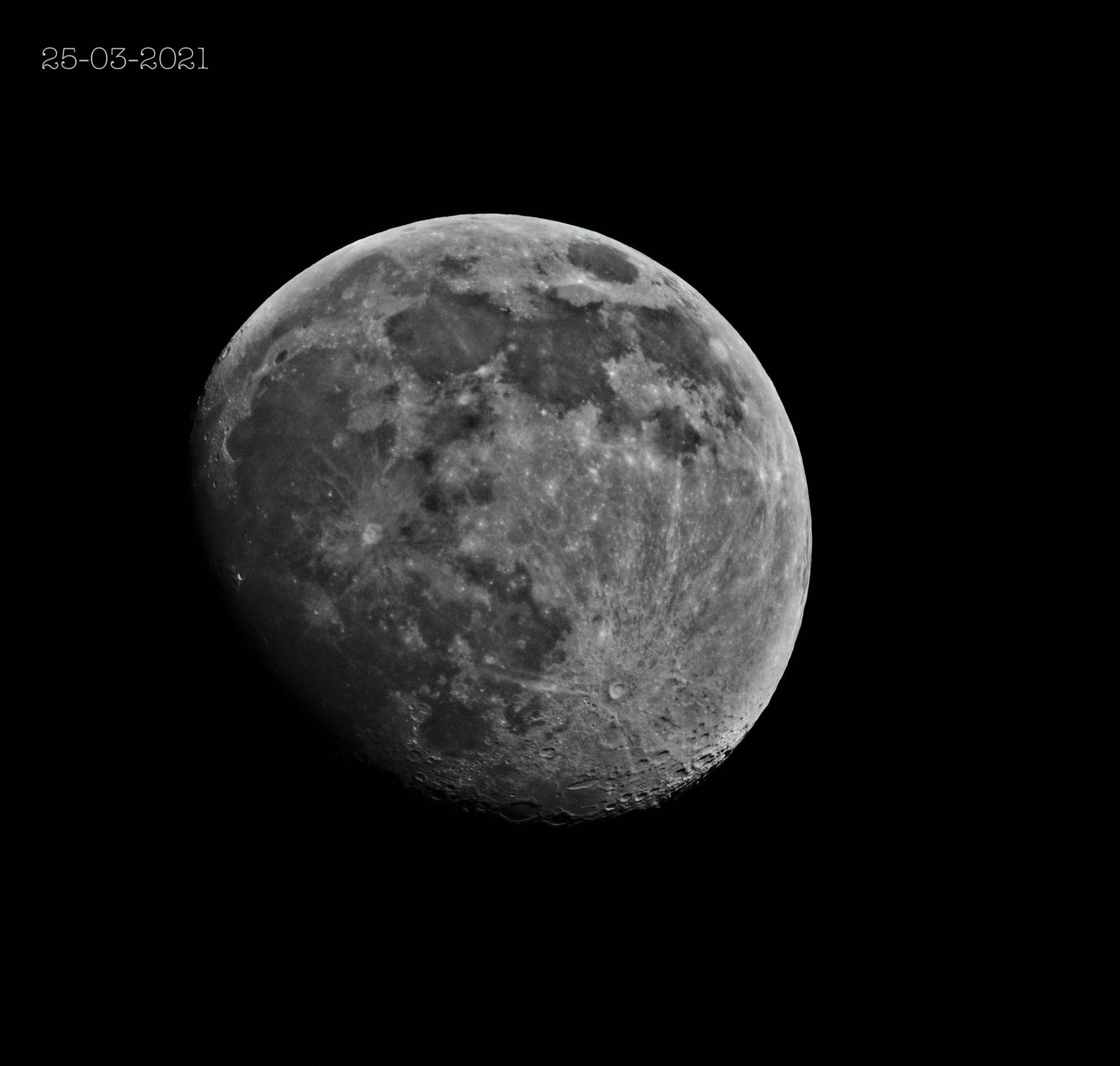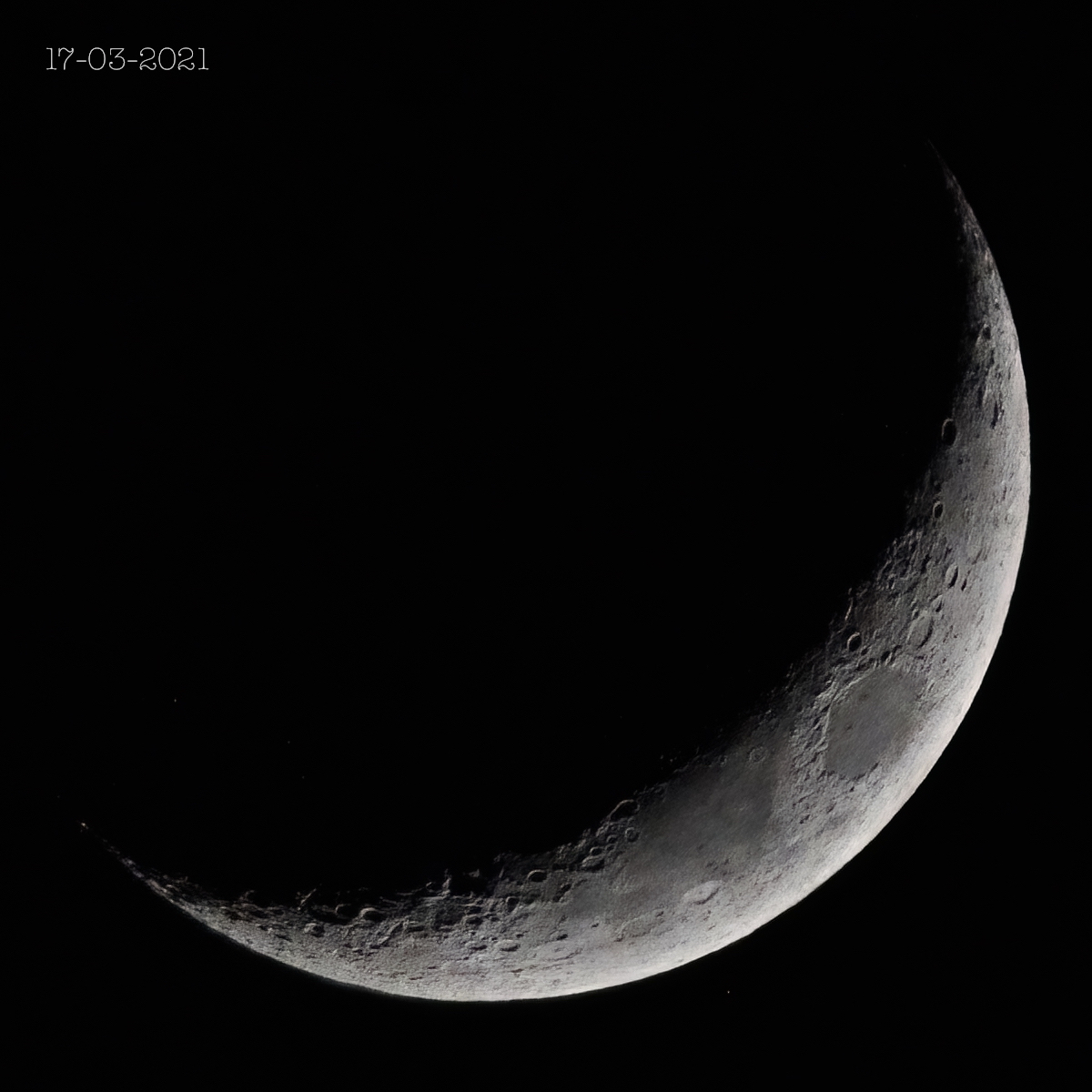Our nearest neighbour the Moon has played an integral role in all cultures throughout time. Part of the celestial timepiece that marks the progression of the year and the seasons it affects the whole natural world with both its illumination and it's gravitational hold on our ocean tides. Possibly the most obviously dynamic feature of the night sky it's bright reflection of sunlight when in its fuller phases plays havoc with astronomy when observing or photographing the rest of the sky but in itself it provides a fascinating target especially when the terminator gives contrast and relief to surface features as it sweeps through the phases.
To get good views of surface details you need a reasonably long focal length scope or camera lens. I tend to use my Sigma 150-600mm camera lens with a 2x teleconverter to give a focal length of up to 1200mm. In addition it may be useful to add in a specific moon or ND filter to cut down on glare and improve contrast, it is after all a pretty bright object compared with the rest of the night sky.
For imaging I take video and then process the individual frames (in their thousands) to stack them together, reducing noise and improving the resolution of individual details. The software I use includes PiPP, AutoStakkert! and ImPPG.
